Decorative plaster interior wall decoration. How to renew a decorative plaster coating. You may also be interested
Decorative plaster has existed for more than 400 thousand years, already in the Renaissance, this method of wall decoration was widespread, and it was called frescoes. Then these works were performed using hand stencils, and the finish looked like repeating patterns. But true masters were able to create real masterpieces by carving their paintings on hardening cement.
Nowadays, this way to decorate a wall and smooth out its imperfections has not lost its relevance, and decorative plaster is widely used both for exterior decoration and interior decoration.
Classification
There are many types decorative plaster, so it is quite difficult for a beginner in this area to decide on the choice of a suitable option. In order to understand which decorative coating will ideally fit into a particular interior, you need to know the features of each type.
There are several ways to classify decorative plaster. The first way is the place of application. Facade work is largely designed not only to hide the flaws or defects of the walls, but also to insulate them. Very often the raw materials used for exterior finish, contains various impurities that can improve the internal microclimate of finished buildings.
The interior decoration tasks are essentially the same. Firstly, it is a powerful tool to make the interior truly unique and beautiful, and secondly, it is a good way to smooth out corners, eliminate uneven walls and ceilings, and remove other construction flaws. Depending on the type of plaster mixture, further processing of the walls may be necessary - painting, wallpapering, and more. But there are mixtures that in themselves have a high aesthetic and decorative value.
According to the composition of the mixture, decorative finishes can be divided into 4 main types:
- mineral mixtures;
- polymeric;
- acrylic;
- silicate.
mineral mix
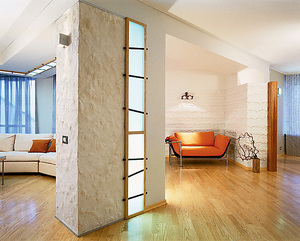 Today it is the most common material for decorative finishes. Its basis is a cement-lime and sand-lime mixture with the addition of gypsum. In addition to the low cost, a big plus is the high environmental friendliness of such a finish, but its minus is its fragility. The mineral mixture can be used for both exterior and interior decoration. Most often it is used for the ceiling and walls of the bathroom, since such a mixture is absolutely not afraid of water.
Today it is the most common material for decorative finishes. Its basis is a cement-lime and sand-lime mixture with the addition of gypsum. In addition to the low cost, a big plus is the high environmental friendliness of such a finish, but its minus is its fragility. The mineral mixture can be used for both exterior and interior decoration. Most often it is used for the ceiling and walls of the bathroom, since such a mixture is absolutely not afraid of water.
Polymer plaster
This mixture is made on the basis of acrylic dispersions, epoxy resins, polyurethane. It has great resistance to aggressive environments and moisture, it is reliable and durable, and also has high plasticity. But due to low vapor permeability, such a mixture is not used with mineral wool-based insulation systems.
silicone plaster
Made from silicone resin, it is self-cleaning, UV-resistant and dust-repellent. Reliable, durable, but not cheap. The latter fact significantly reduces its distribution. But such plaster is sold ready-made, which makes its use very easy. Moisture and dirt collects on the surface of the silicone finish and is very easy to wipe off. Therefore, it has the greatest use near roads.
Silicate plaster contains in its composition liquid glass. This type of decorative finish has many advantages:
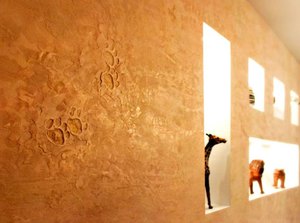
In addition, there is a classification of plaster according to its decorative properties or appearance.
Structural plaster
This type of plaster is sold ready-made. Due to inclusions, when applying the mixture to the wall, an uneven mark remains. The most common type of structural decorative plaster is "bark beetle". Outwardly, it resembles the bark of a tree, spoiled by insects. For interior plastering, this finish is not very suitable, because it looks quite rough. But for the decoration of facades is very widely used. Majority public buildings have such facades.
Textured plaster
Most often, this finish recreates natural stone, but imitations of porcelain stoneware, velvet, leather, wood and even silk fabric are no less common. This effect is achieved by coating the surface with thin-layer printed concrete. This type of decoration is very common among architects. In addition, this decorative plaster has refractory properties, a high degree of environmental friendliness, it has excellent decorative properties, and in order to apply it does not require special preparatory work. The basis for such plaster can be any surface - brick, concrete or plastic.
flock plaster
It is also called silk, and based on the name, you can get a general impression of it. It consists of silk fibers, natural cellulose, mineral fillers, and mineral dyes. It perfectly conveys the qualities of silk, the way light and shadows shimmer on it. Such plaster produces a huge artistic effect, but in addition to a beautiful cover, there is also beneficial features. Flock plaster allows the walls to breathe, is a good sound insulator and perfectly retains heat in the room.
A few examples of plaster finishes
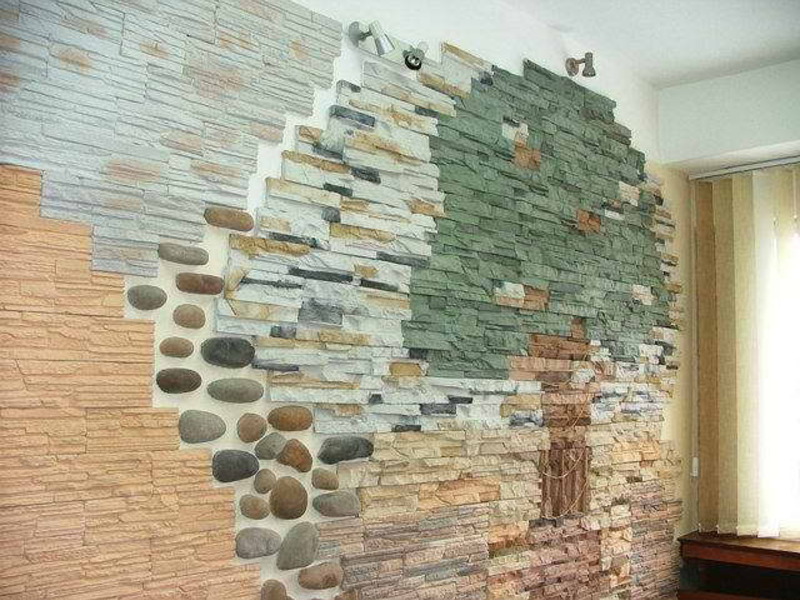
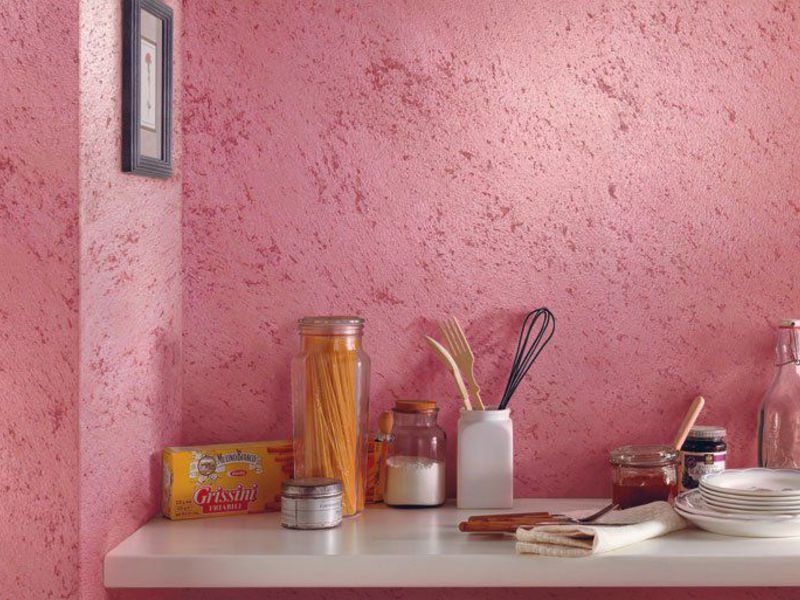
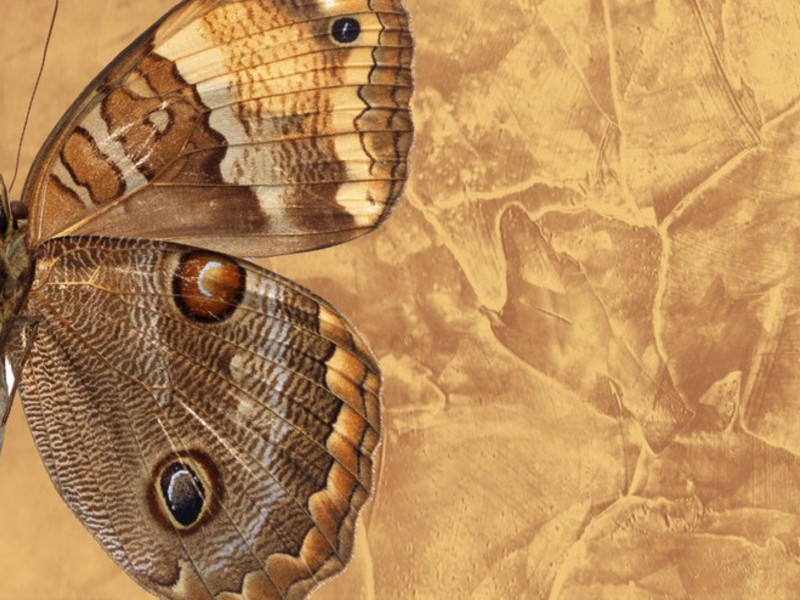
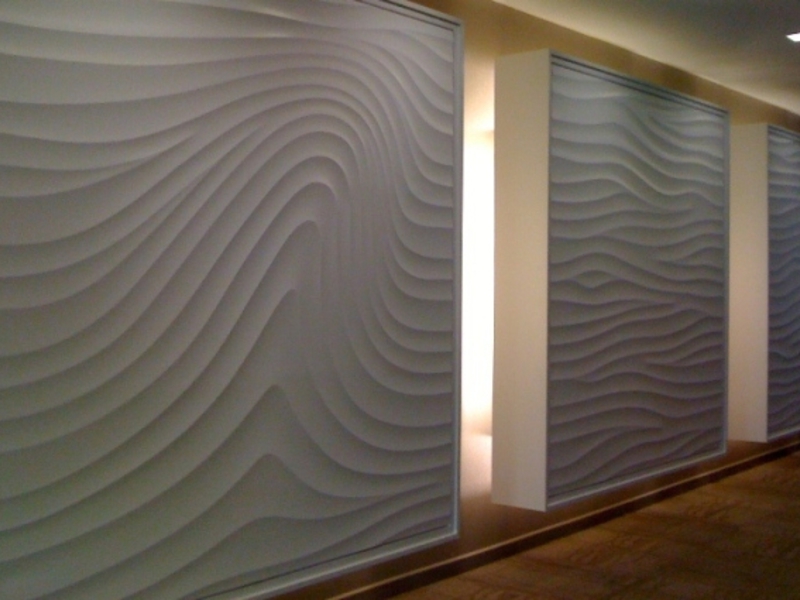

![]()
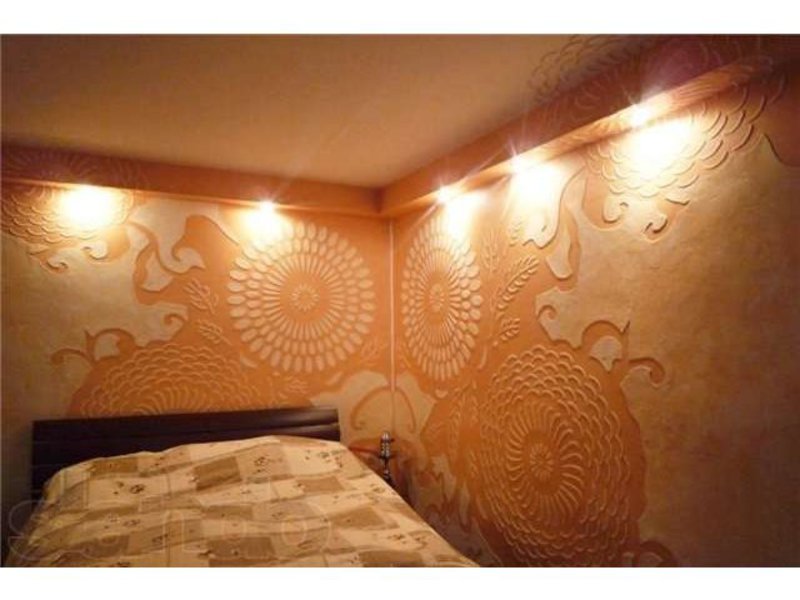
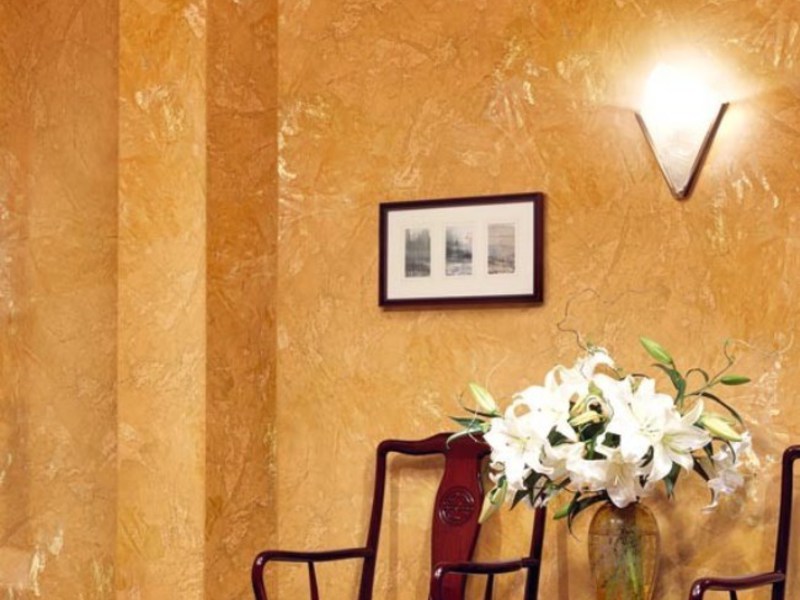
Plaster based on marble chips
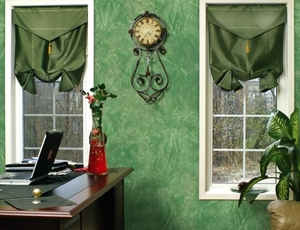 Such a coating is very durable, made by adding granite or marble chips to the mixture. Depending on the size of the crumb, the final appearance can greatly change. Quite often, quartz or other additives are also added to give special shades, such as golden shimmer. It has high resistance to frost and sun, and will also withstand vandals. It can withstand most mechanical impacts, which makes it an excellent coating for facades.
Such a coating is very durable, made by adding granite or marble chips to the mixture. Depending on the size of the crumb, the final appearance can greatly change. Quite often, quartz or other additives are also added to give special shades, such as golden shimmer. It has high resistance to frost and sun, and will also withstand vandals. It can withstand most mechanical impacts, which makes it an excellent coating for facades.
But it can also be used indoors. Such plaster is especially convenient for replacing wallpaper where there are active pets. The main rule when using this finish is a thorough priming of the walls, otherwise the source material may shine through.
Venetian plaster
This decorative finish is the undoubted leader among others due to its artistic effect. It is subject only to true masters and is the pinnacle in artistic wall decoration. Outwardly, such a surface resembles marble or onyx, it contains the smallest veins of natural stone and sometimes it is very difficult to distinguish it from real material. Through the use of wax, a special depth of color and an inner glow effect are achieved.
Such a mixture is applied in short strokes in several layers, which are usually at least seven. Each layer must be dry before applying the next. This is a very painstaking and accurate work, so the prices for it are very high, but it's worth it. This finish is unique and no master can create two identical surfaces, even if he really wants to.
Creating a relief with your own hands
 Before starting to apply decorative plaster, it is necessary to prepare the surface. First of all, the walls are cleaned to the ground (brick or concrete). All dust and debris is removed from the walls with a damp cloth and a vacuum cleaner. And the room itself is subjected to wet cleaning. Next, the floor is covered and all the places where the plaster should not get. The walls are treated with a primer to improve the adhesion of the solution to the treated surface. After that, you should consider the colors that will be used in the design.
Before starting to apply decorative plaster, it is necessary to prepare the surface. First of all, the walls are cleaned to the ground (brick or concrete). All dust and debris is removed from the walls with a damp cloth and a vacuum cleaner. And the room itself is subjected to wet cleaning. Next, the floor is covered and all the places where the plaster should not get. The walls are treated with a primer to improve the adhesion of the solution to the treated surface. After that, you should consider the colors that will be used in the design.
The solution is selected depending on the surface to be treated, if it is a small niche, then it is more convenient to use ready-made formulations. And if you want to plaster a large surface area, then it is much more economical to use dry mixes. It is not too difficult to make a solution on your own. It is necessary, according to the instructions, to dilute the powder with the required amount of water and beat it all with a construction mixer until sour cream.
Further, when applying, you need to remember that a light shade is the basis for a darker one. The solution is applied to the wall and carefully leveled, you can use special rubber spatulas. Next, a pattern, pattern or texture is applied. You can use a huge number of tools, special rollers with ready-made drawings, draw on your own, push through something, for example, a children's mask. In general, full scope for a flight of fancy. After complete drying, a second layer is applied on top. And the thinner it is, the better the relief will be visible.
The second layer should be darker than the first, this gives volume to the painted texture. Many masters use several reliefs for one wall and even several different shades. This gives a special originality. After the process of creating a relief is completed, you need to think about safety. To give durability and get rid of pollution, a polyurethane sealant is applied on top. This should be done 30 minutes after applying the last layer. Each master has his own secrets and tricks for creating unique drawings.
Textured finishes can take on a myriad of shapes and forms, and you can even create an imitation of crocodile skin.
Drawings and panels
Some to create interesting design rooms use certain patterns or panels. But the question often arises where they can be used. There are many options, some of them are shown in the photo:
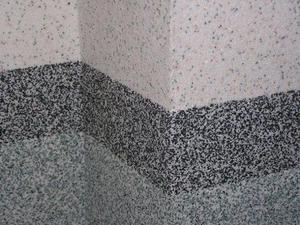
There are three ways to create drawings and panels.
The first way is to use stencils. Drywall is taken as a stencil and a pattern or pattern is cut out on it. Next, this stencil is attached to the wall using masking tape or special glue. Then the plaster solution is applied to the cut-out elements of the stencil, the thicker the layer, the greater the volume. After that, the stencil is removed, and the drawing dries. This usually takes about a day. At the end, the panel is shaded and gives it a certain shade. Such panels look very beautiful on the ceiling.
The second technique is decorative wall painting. To do this, you need fine-grained plaster, acrylic paint and clear varnish. You can apply a drawing using a stencil, but people with an artistic gift draw their creations from scratch. After the drawing is ready, the texture is created with the help of special rollers, and the final painting takes place after the paint dries. From above it is covered with a transparent varnish to preserve the pattern.
The third way is stucco panels. This is a very effective way of finishing, it can imitate a brick or stone wall, as well as depict animals, people, plants and much more. A very complicated way of finishing and without the help of specialists it is definitely impossible to do here. It is expensive, but the effect produced is worth the money. Not a single person will remain indifferent at the sight of a stucco panel.
Of course, only the person himself makes the final decision about what type of decorative finish he should choose. However, this must be approached with all responsibility, because not only the appearance will depend on the correct selection of materials, but also how much this interesting element decor will please the eye.
Decorative finish options
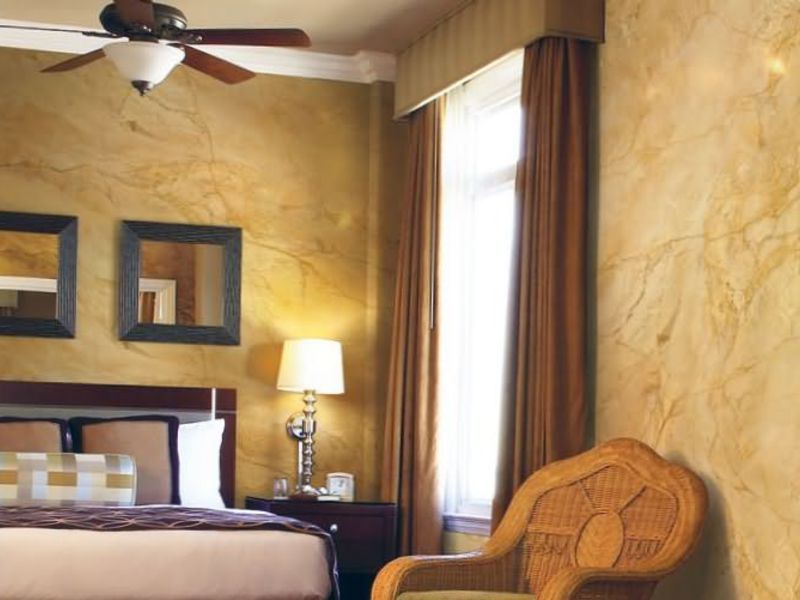
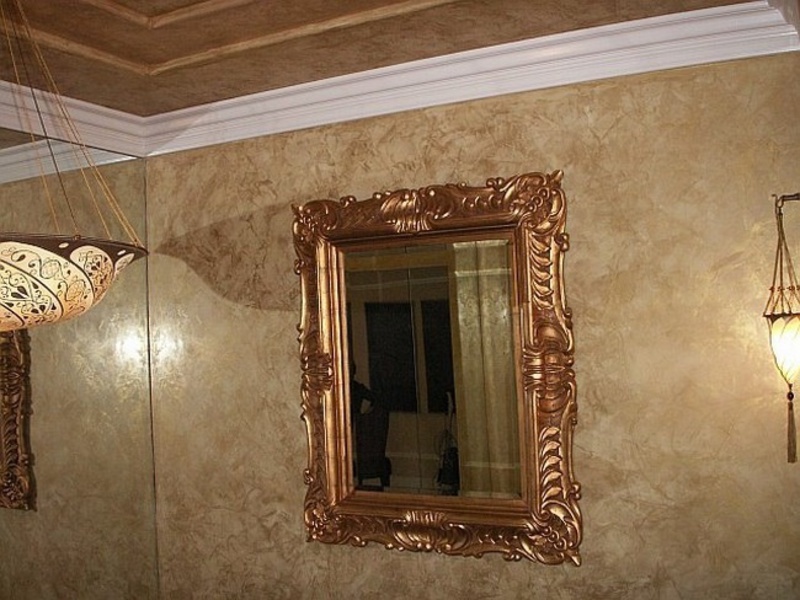
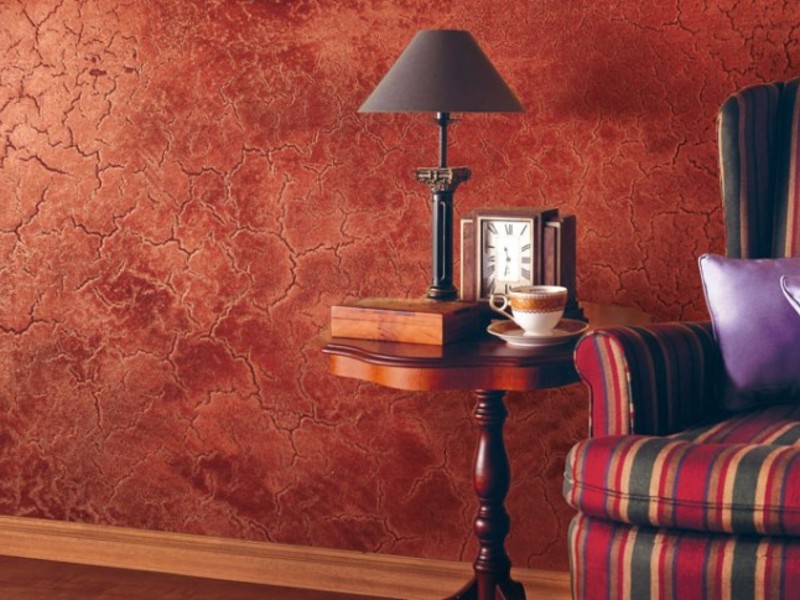
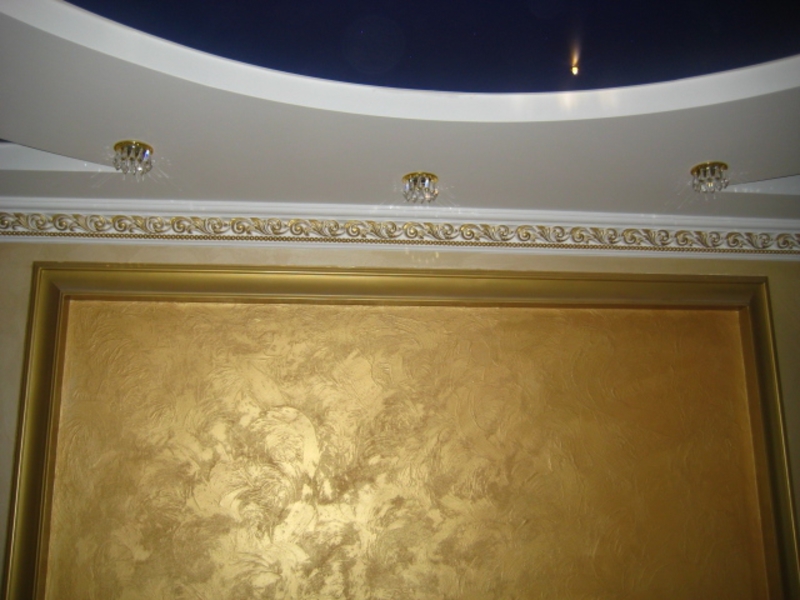
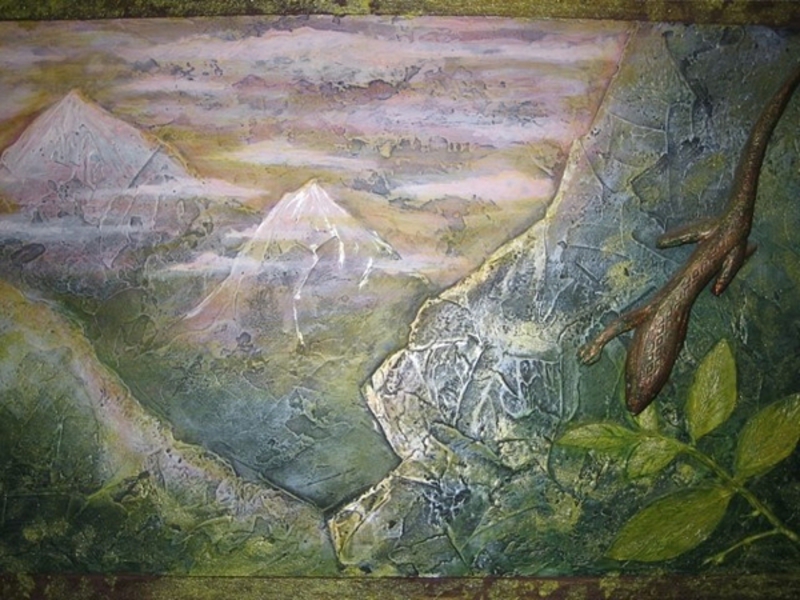
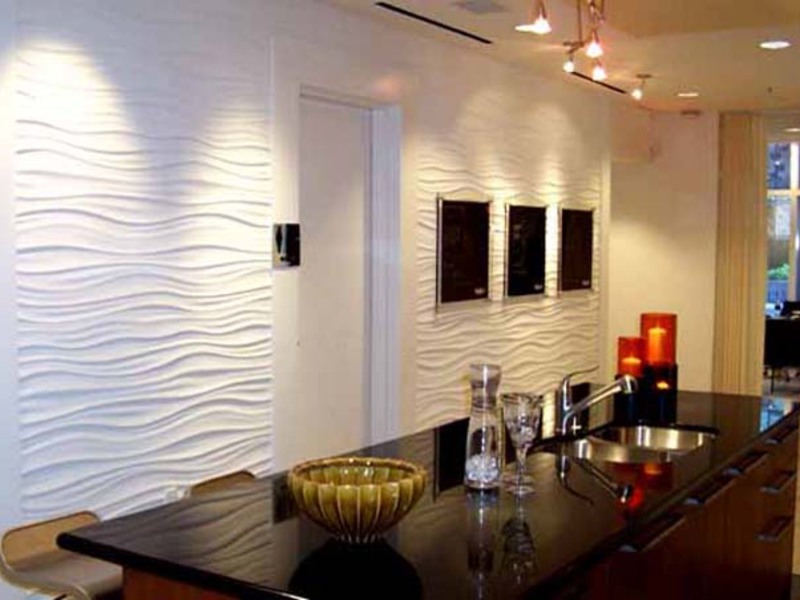

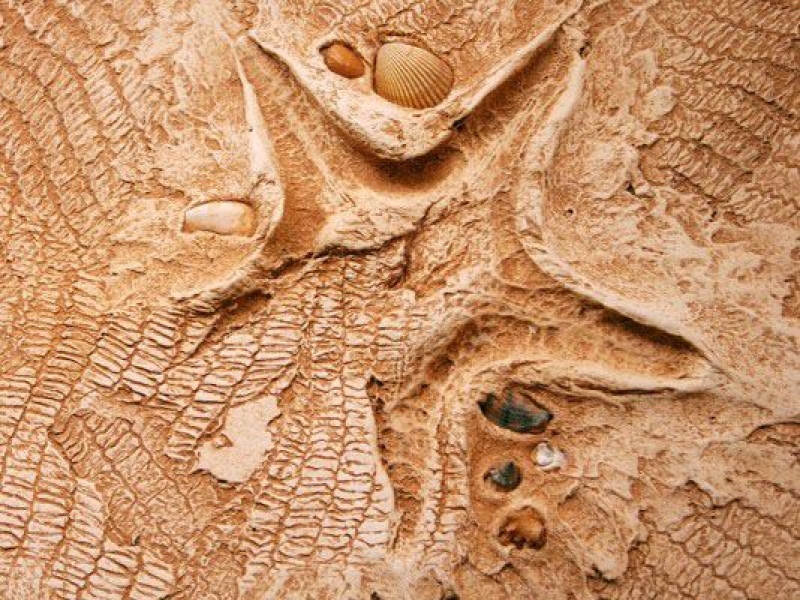
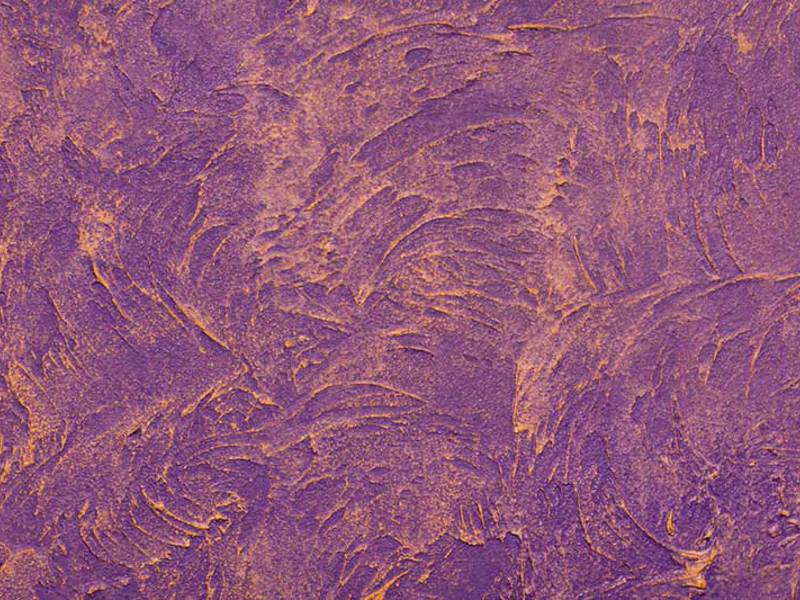
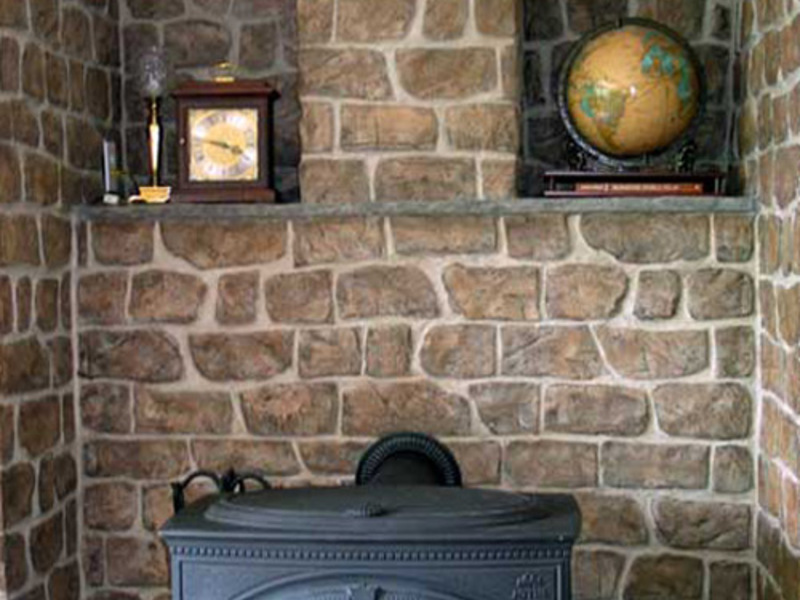
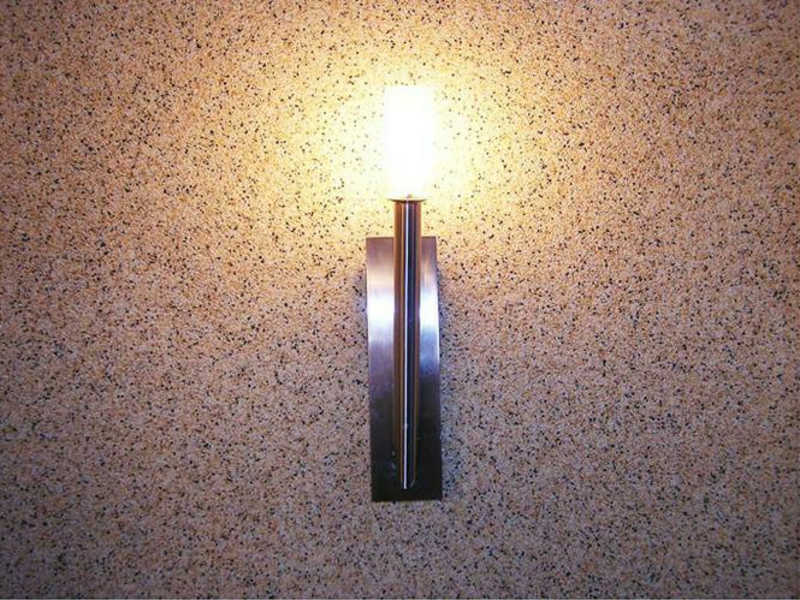
Decorative plaster for interior wall decoration is today considered one of the preferred options. The article describes the composition of mixtures for interior design, and also provides detailed description technologies.
Overview of materials
Varieties of plasters
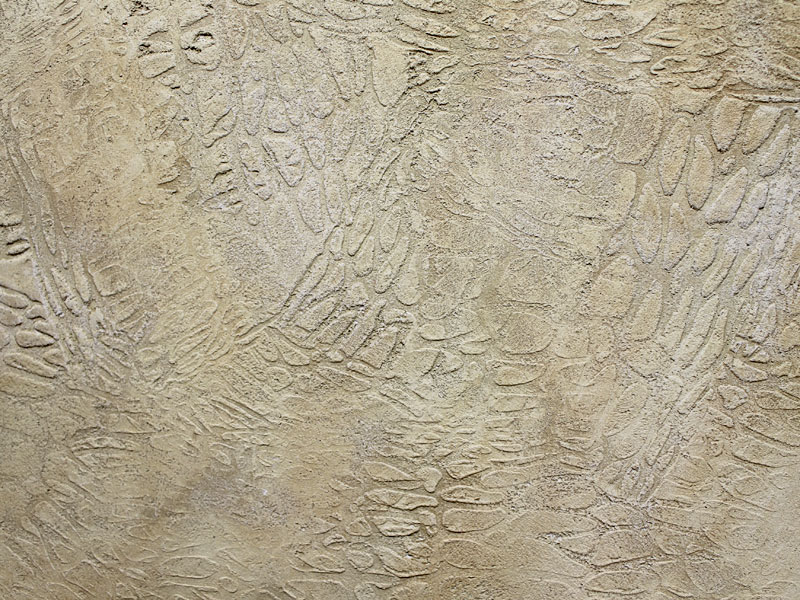
A decorative plaster mixture is called, which, after being applied to the wall, is not masked. Due to the high aesthetic characteristics of the applied composition, the wall acquires an attractive appearance. In addition, those used for the mixture have quite acceptable performance, so that the coating is strong and durable.
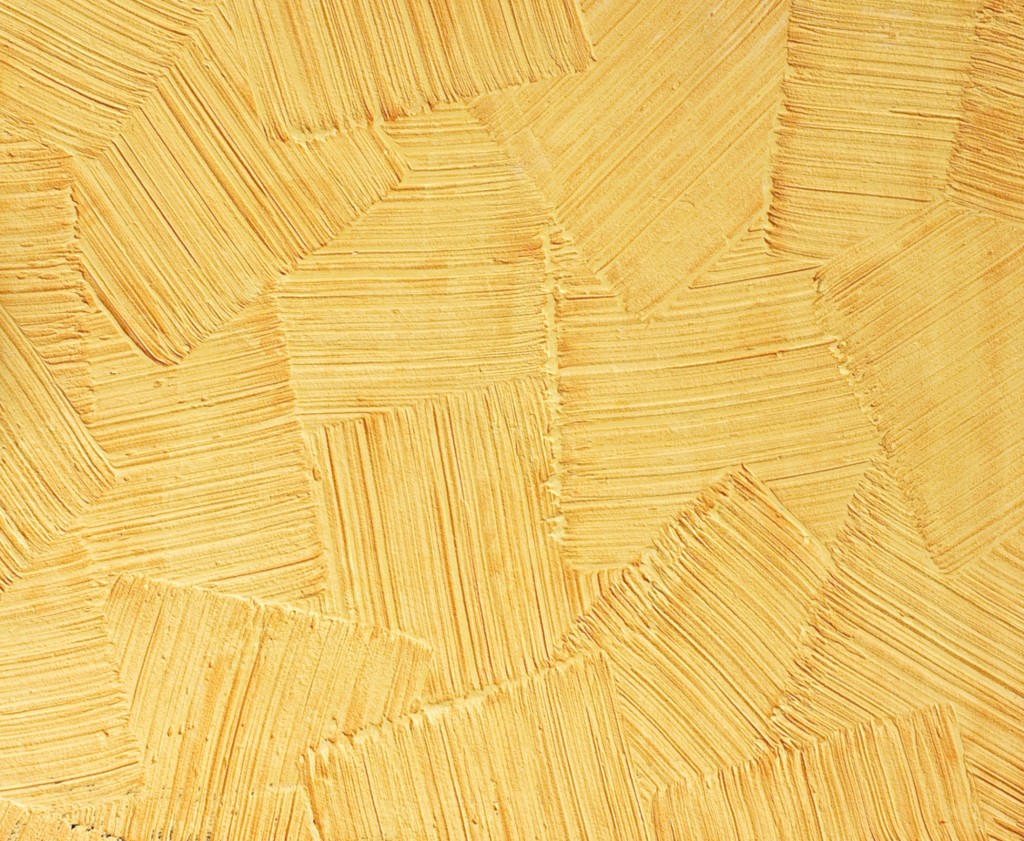
In the design of the premises are used the most different types decorative plasters, but all of them can be divided into two large groups:
| Variety | Peculiarities |
| Textured | The composition for plastering is made homogeneous or almost homogeneous. The material is characterized by high plasticity, which allows it to be applied in thin layers, forming an arbitrary relief - the texture of the wall. It is the texture that forms the basis of the decorative potential. In addition, the beauty of the surface is provided by the use of pigments (colouring in mass and external), glitter, finely ground mineral additives, polishing, etc. The most famous example of textured coatings is Venetian plaster. |
| Structural | Structural types of decorative plaster differ from textured ones in a heterogeneous composition. Mineral granules are added to the plastic binder, which provide the formation of a beautiful surface. Granules can be located both in the thickness of the material and on its surface. In the first case, we get only a beautiful relief that can be emphasized with color. In the second, the minerals themselves play the role of the front layer. |
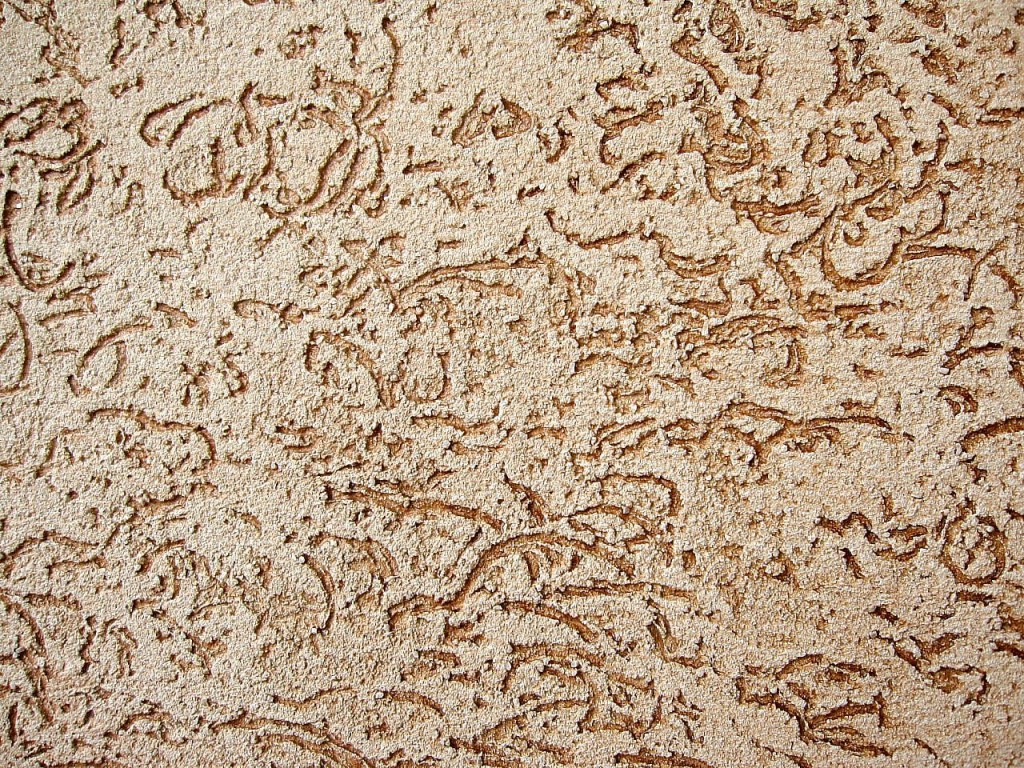
"Bark beetle" - the most common texture with mineral granules
These types of decorative plaster can be purchased both in finished form and in the form of separate components. The first option is suitable for those who do not want to spend time preparing and are ready to overpay for it. The price of individual components will be lower, but proportions will have to be observed in the manufacture of the plaster mass.
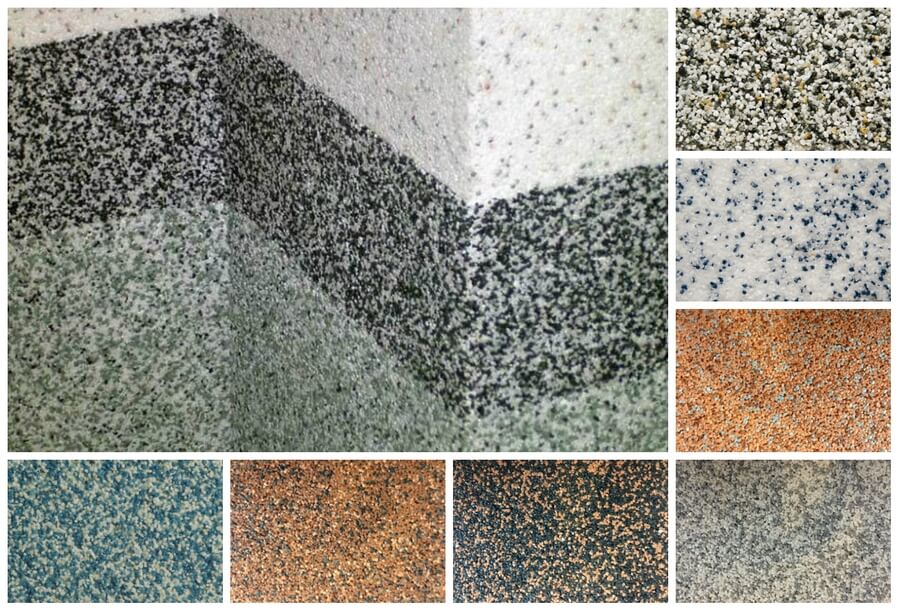
Main Components
Plaster for interior decoration, which has a high decorative potential, has a three-component structure:
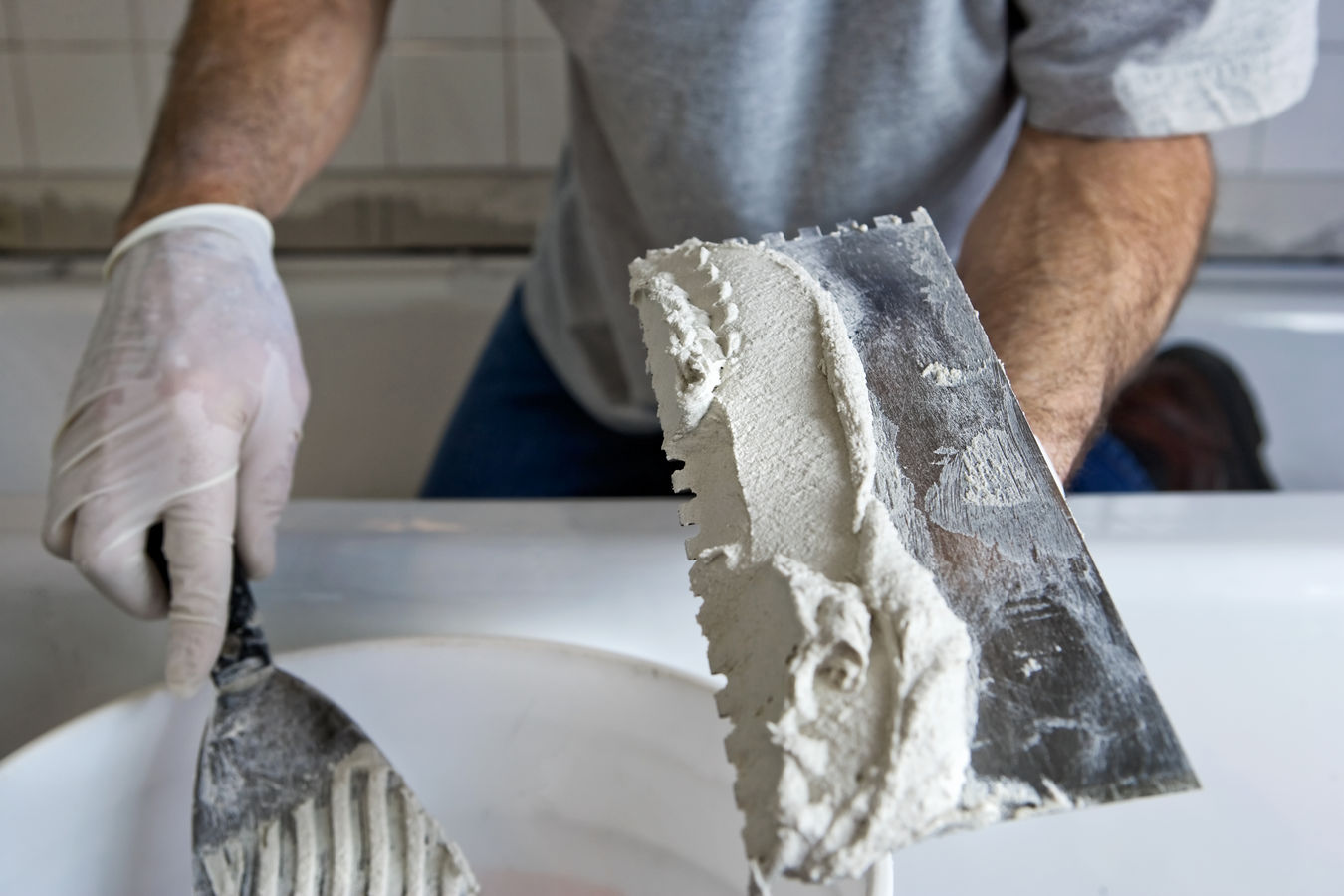
- Base material- a binder that forms a continuous coating, ensures the fixation of the composition on the wall and connects all the components into a single whole. The described compositions are most often produced on a lime, acrylic or silicate binder.
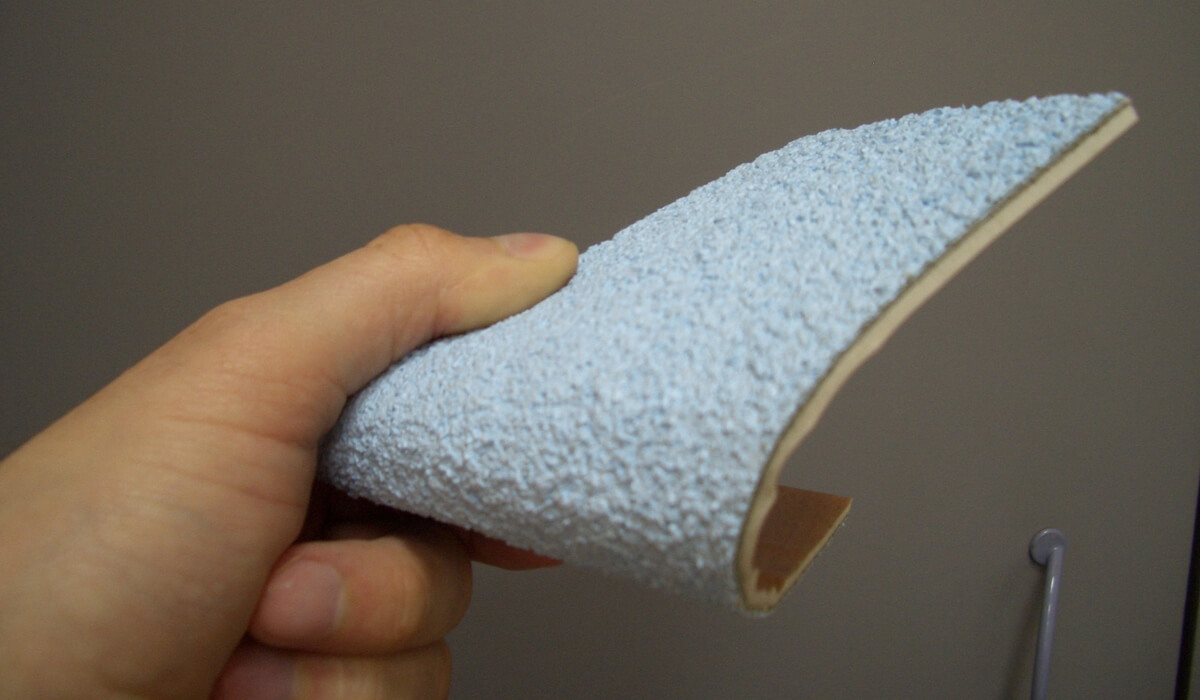
Materials with a magnesian or clay base are somewhat less common. Magnesite binder provides the plastered surface with increased moisture resistance, and clay is used where good resistance to corrosion is needed. high temperatures– for example, when plastering stoves or fireplaces.
- With self-production of decorative plaster, the most common option is lime paste. If it is cooked according to all the rules, then the mixture is plastic. Thanks to this, it is possible to create a complex multilayer texture with a minimum thickness of the finish.
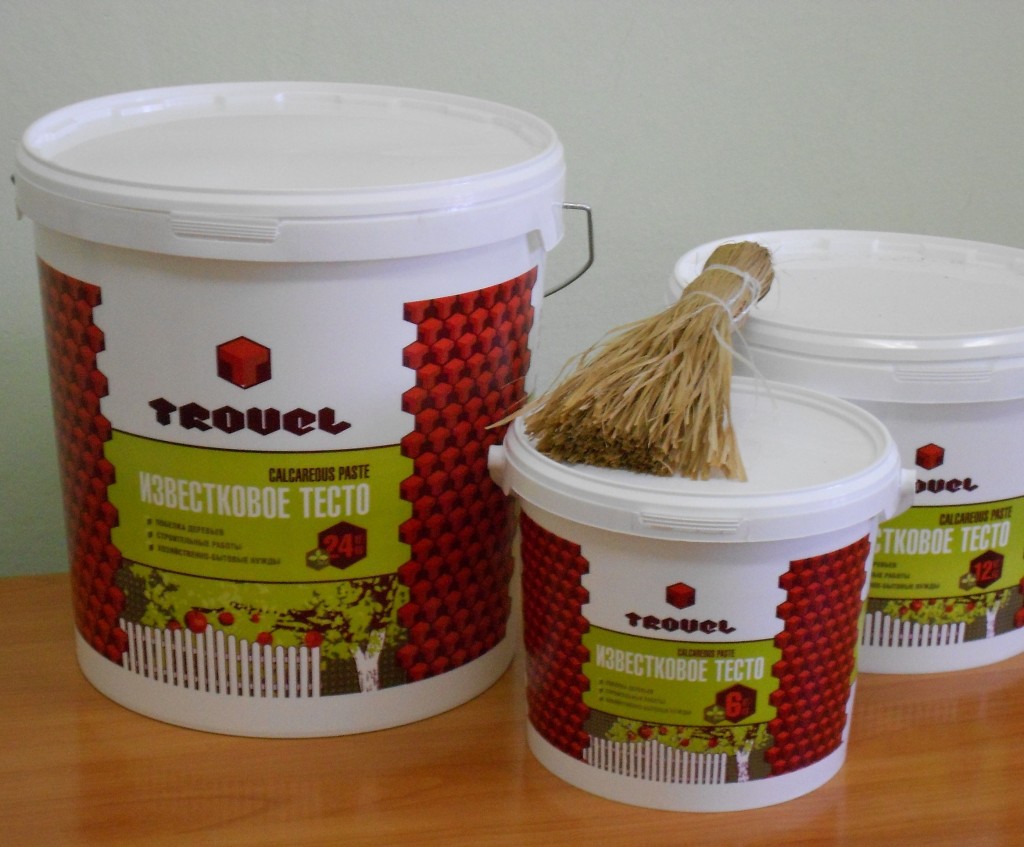
- Screened sand is used as a filler, as well as mineral (marble, quartz, granite, etc.) granules. In textured compositions, minerals play an exclusively mechanical function, giving the coating additional strength - so that they are literally ground into dust. The size of the granules for textured compositions may differ, but for mixtures used in interior decoration, it rarely exceeds 2-3 mm.
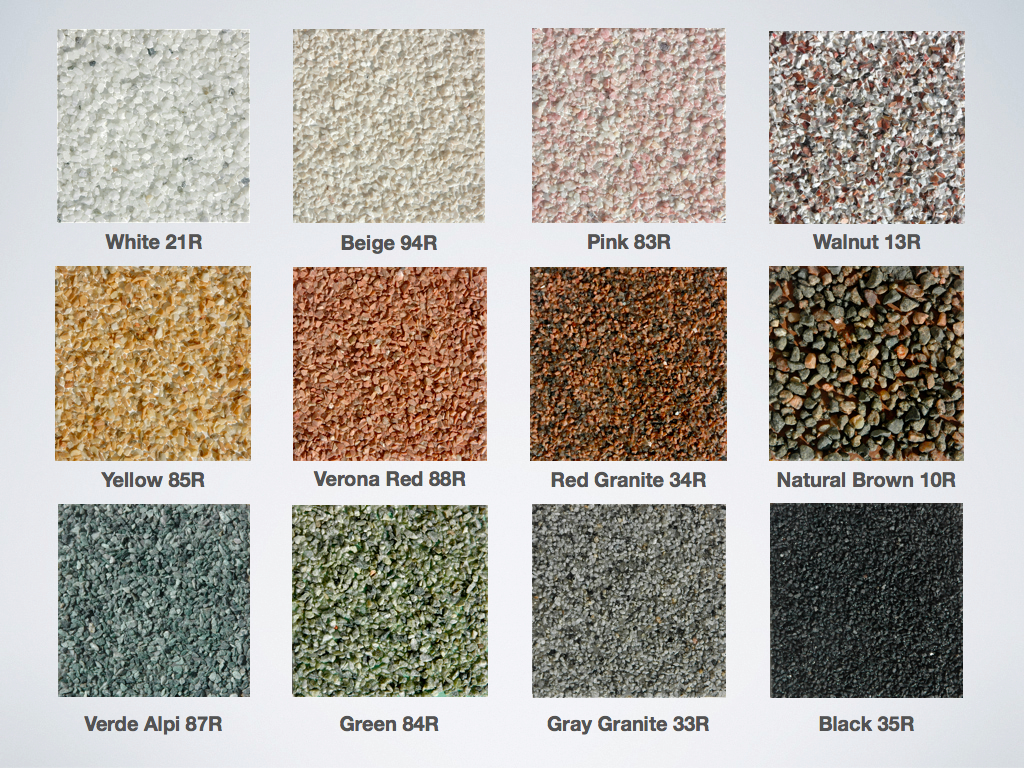
- Pigments - are introduced into the composition of the binder, give it a primary color. The use of a colored mixture makes it possible to achieve artistic effects with less effort. Naturally, the dye must be selected taking into account the planned colors trimmed surface.
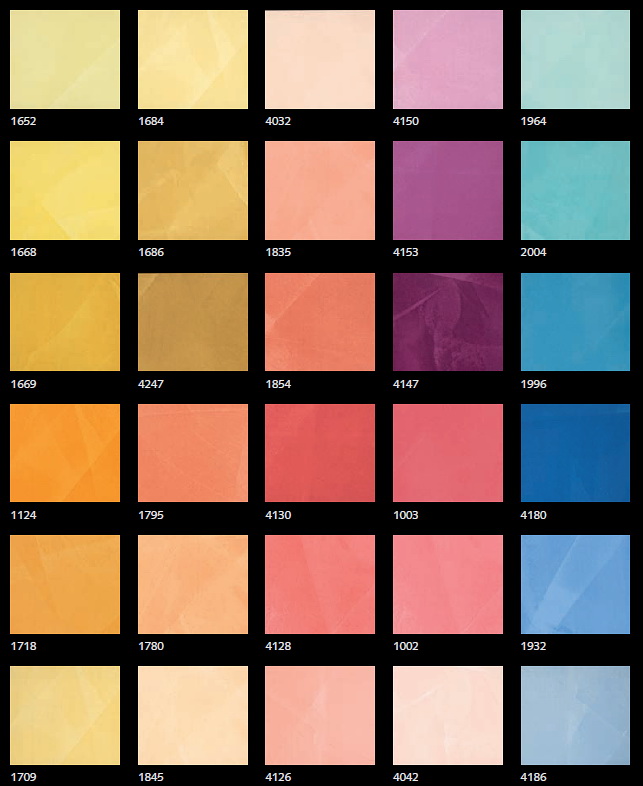
In addition to these components, various additives may be included in the composition:

- plasticizers that increase the elasticity of the mixture;
- antiseptics;
- waterproofing components;
- fibrous additives - jute, linen, acrylic;
- glitters (plates of natural mica or synthetic glitters);
- polymer granules, etc.
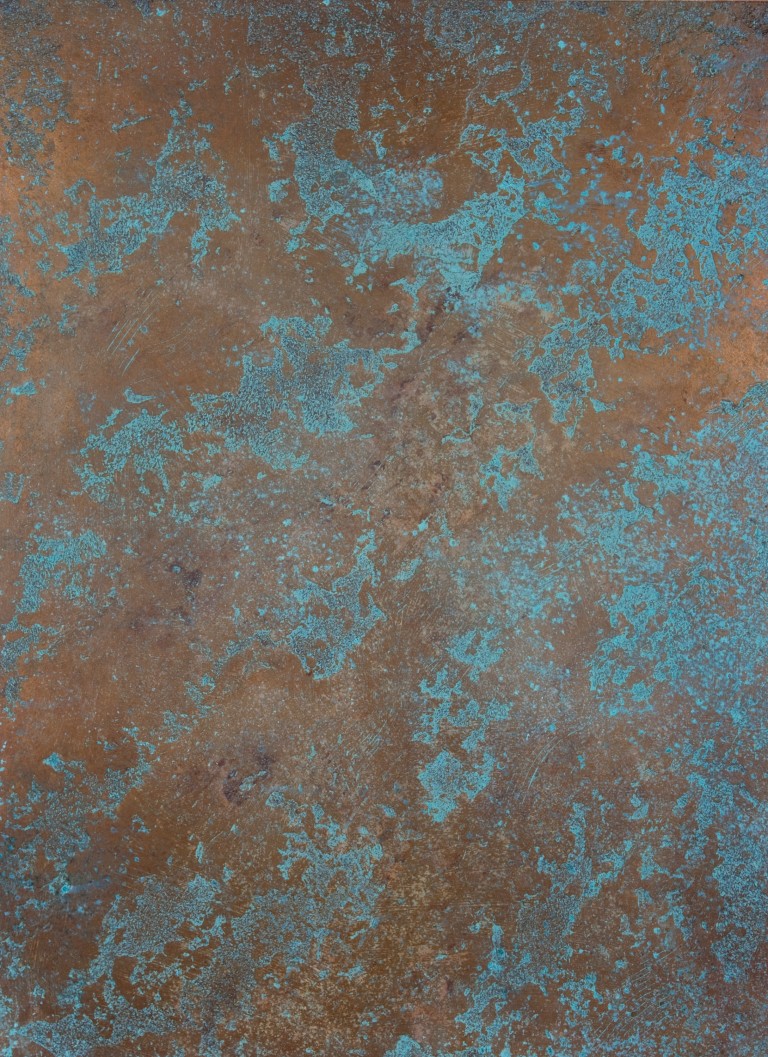
The presence of these components is not mandatory, but thanks to them, compositions for interior work can be given a more attractive appearance or improve their properties.
Advantages and disadvantages
Wall decoration by applying a decorative plaster mixture has a number of advantages:
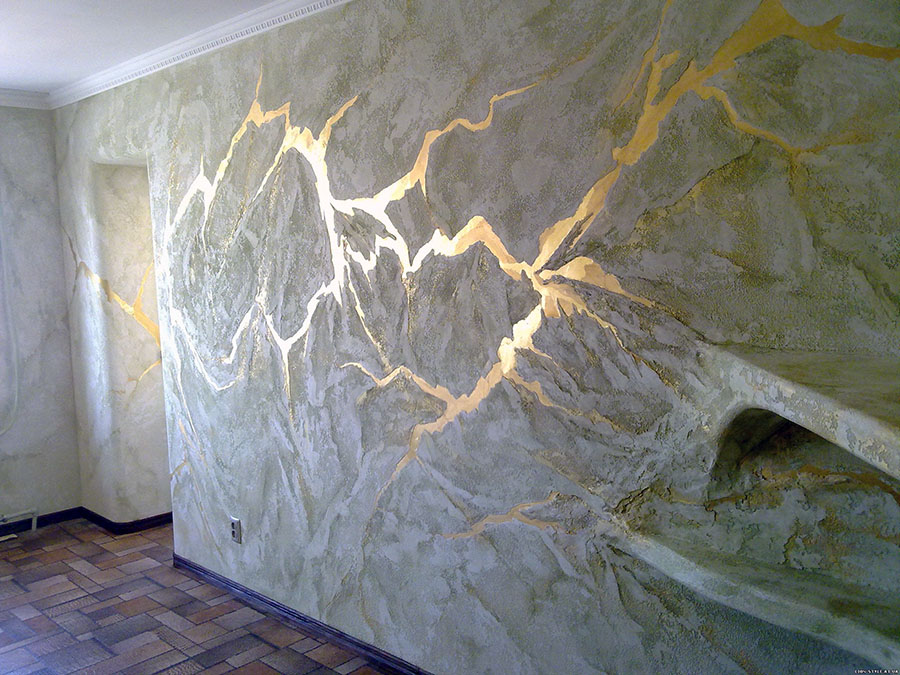
- First, the surface is very beautiful. The effect is achieved both by forming a unique texture, and by changing the color and combining areas with different shades.
- Secondly, the textured surface allows you to mask the unevenness of the base. Due to this, the process of preparing walls for applying decorative plaster is less time-consuming compared to putty for painting.
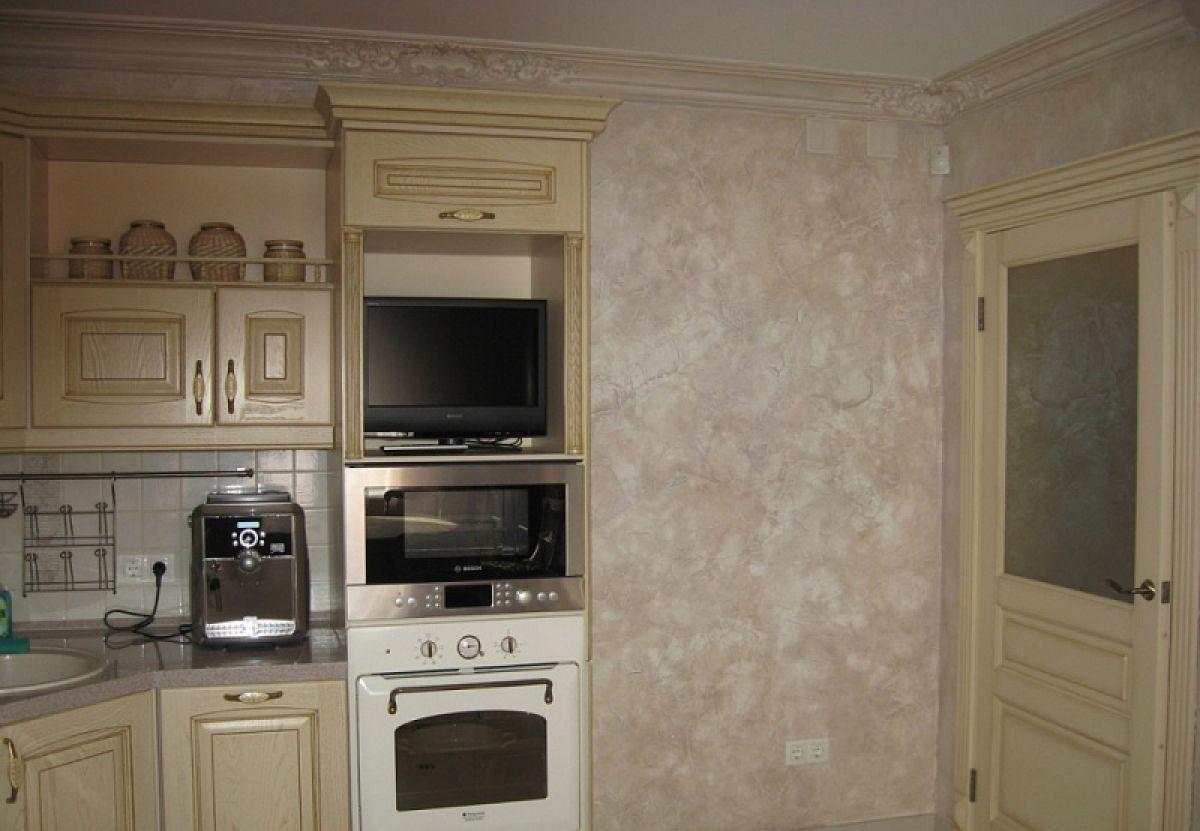
- Thirdly, after application, the binder polymerizes, forming a fairly dense coating. Plastering not only strengthens the wall, but also protects it from external influences.
- Environmental friendliness and safety can also be attributed to the advantages of this type of finish. The composition of plasters does not include toxins, heavy metals and volatile substances. Thanks to this, such decorative design can be used in any residential premises, including bedrooms and children's rooms.
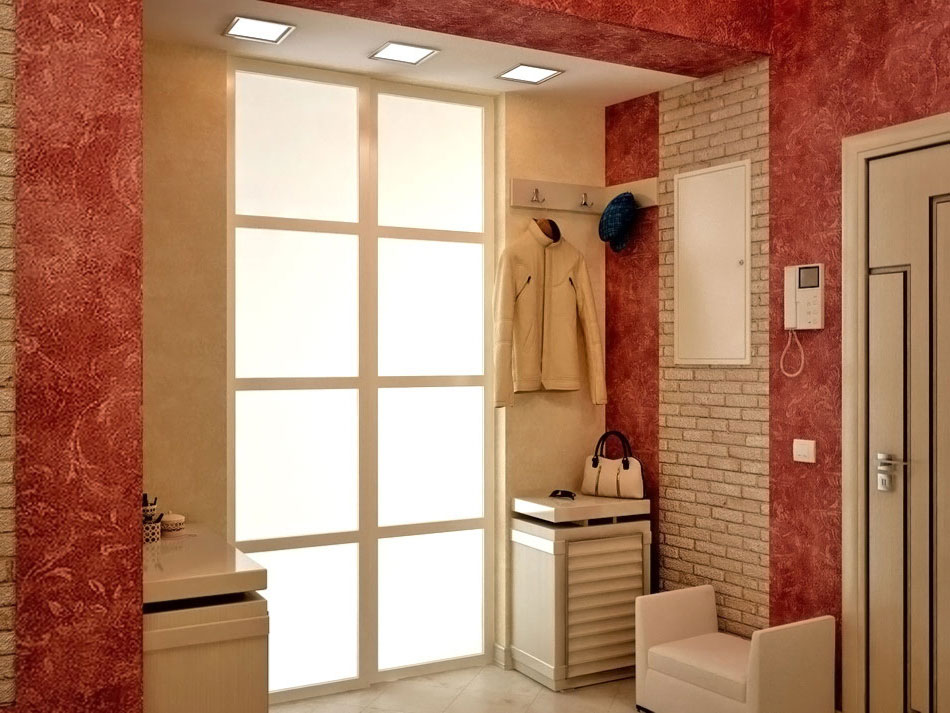
- Finally, the plus is a fairly simple do-it-yourself application. Of course, to create complex relief compositions, as well as to lay, for example, Venetian plaster, skill is needed. At the same time, with minimal skill, everyone can master the technology of decorative plastering after several attempts on "prototypes" of walls.
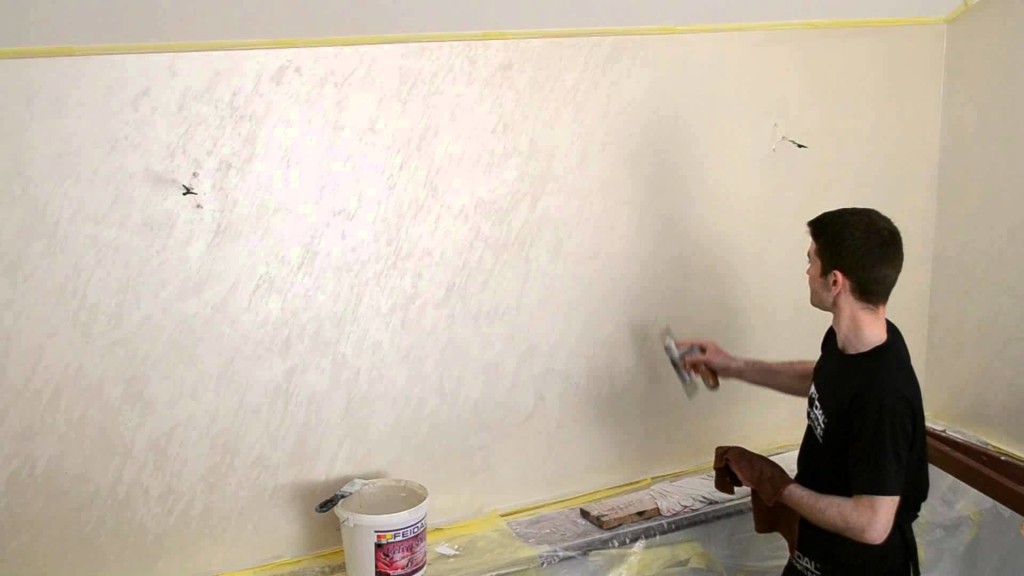
This type of finish also has disadvantages:
- The first, and most obvious, is the high cost of materials. For 5 kg of plaster mix, you will have to pay from 1000 to 7.5 thousand rubles, depending on the brand of the composition. In addition, you will additionally have to spend money on materials for rough preparation (plaster, putty, primer), as well as on finishing (painting, polishing, varnishing).

The consumption of decorative compositions for interior use ranges from 700 - 1200 g per square meter. If applied in several layers, for example, when forming a pattern, the consumption will increase.
- Another disadvantage is the high demands on the foundation. Yes, it does not have to be perfectly even, but you can only plaster clean, dry and durable. Also, don't skimp on primer.
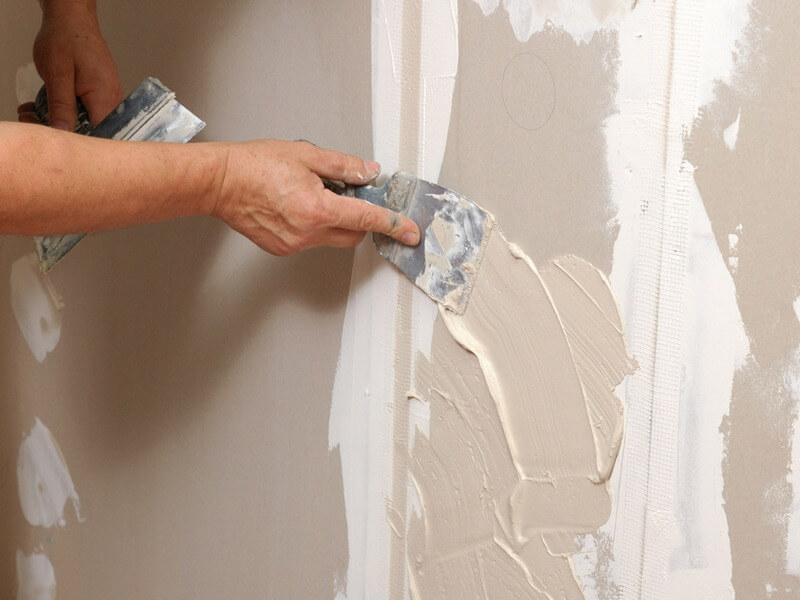
- Finally, difficulties may arise at the dismantling stage. After polymerization, the soft base is firmly fixed on the base, therefore it has to be removed with a puncher along with the draft layer.
However, if the financial aspect suits you, then it is quite possible to put up with the rest of the minuses.
What do you need to work?
To finish the wall with decorative plaster, we will need the following materials:
| Material | unit of measurement | Average cost, rubles |
| Decorative plaster mixes | ||
| Paladio plaster | 5 kg | 1300 |
| Tierrafino plaster (mother of pearl) | 5 kg | 2700 |
| Veneto plaster (polished marble) | 5 kg | 5800 |
| Plaster Stucco Veneto (metallic tinting) | 5 kg | 7200 |
| Substrate Preparation Materials | ||
| Rough finish plaster | 30 kg | 350 — 550 |
| Leveling putty | 20 kg | 300 — 700 |
| Deep penetration primer | 10 l | 300 — 600 |
| Plaster mesh | m. | 50 — 250 |
| Finishing products | ||
| Decorative wax | 0.5 l | 1500 — 4000 |
| Finishing varnish (gel) | 1 l | 450 — 700 |
| Lacquer (metallic) | 1 l | 1000 -1700 |
| Mother of pearl powder | 100 g | 250 — 400 |
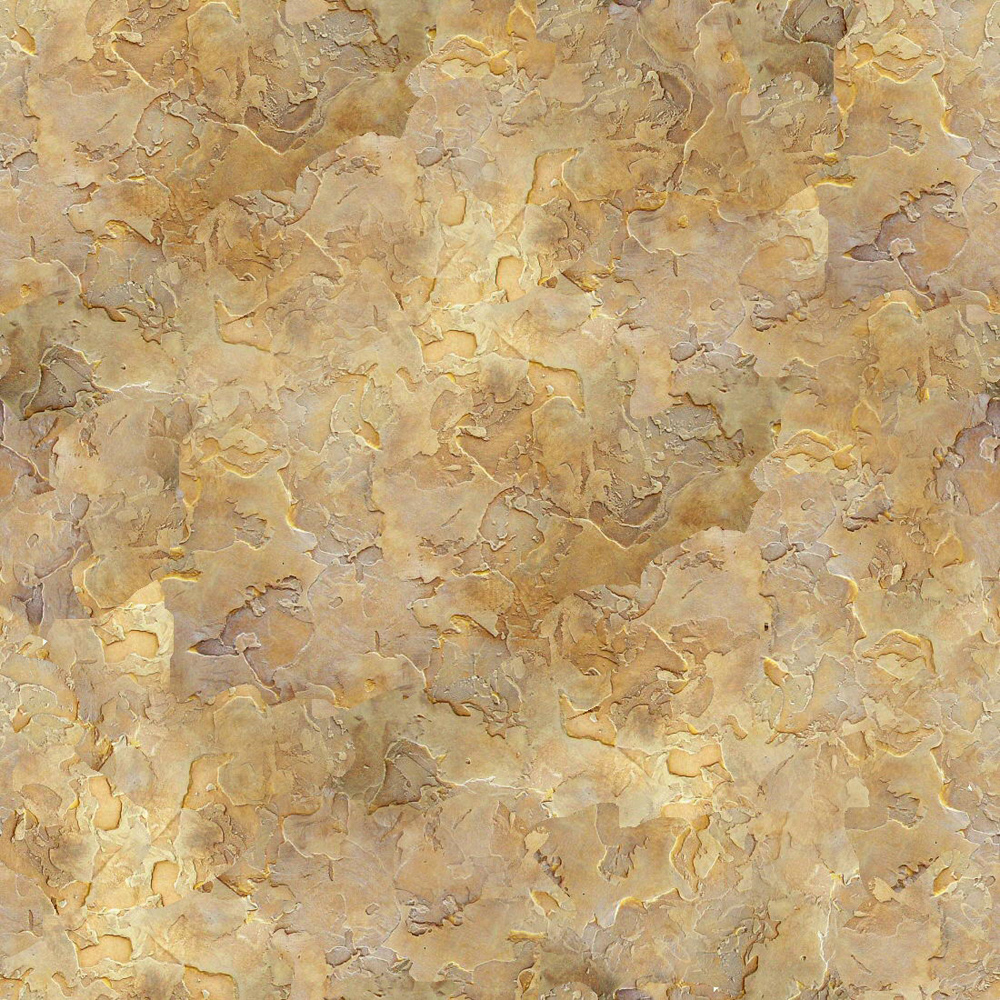
When performing work on applying decorative plaster, the following set of tools is used:

- containers for solutions (larger - for mixing, smaller - for application);
- drill with mixer;
- Master OK;
- plaster floats;
- spatulas of different sizes;
- brushes (flat, with a fairly hard pile);
- sponges;
- embossed rollers;
- hand tools.

The list of tools depends on what surface we will process. Also, the selection of devices for plastering is influenced by the types of textures that we plan to apply. About the nuances of using spatulas, rollers, sponges, etc. I'll cover it in the relevant section.
wall decoration
Surface preparation
In order for the decorative coating to be not only beautiful, but also durable, it must be applied to the prepared surface. Instructions for performing this stage include the following types of work:

- First, check the condition of the plaster. If, when tapping the surface with a heavy hammer, the finish does not peel off and a dull sound is not heard, then re-plastering can be omitted, saving time and money. If the old coating is weak, we knock it down with a puncher, cleaning the brick or concrete base of the wall.
- Slots and cracks in the bearing surface are embroidered, treated with a primer and sealed with a repair compound. If time permits, we use a cement mortar with a hardener. If you need to work quickly, then it is better to use epoxy products to seal cracks, which polymerize very quickly.
- We process the base with a penetrating primer. It is advisable to apply at least two layers, making a pause of several hours between approaches to polymerize the composition.

- We level the wall using a plaster mixture. To do this, we apply about 20 mm of the composition, level it with a rule and then “draw the plane” with graters and spatulas. The dried plaster (it should not slip under the fingers) is rubbed and sanded.
![]()
- For leveling, you can use drywall. We either stick it on the wall or mount it on a wall frame made of a metal profile. We do not plaster the plasterboard surface, but putty, masking all the irregularities, joints between the sheets and attachment points. We also grind the putty.
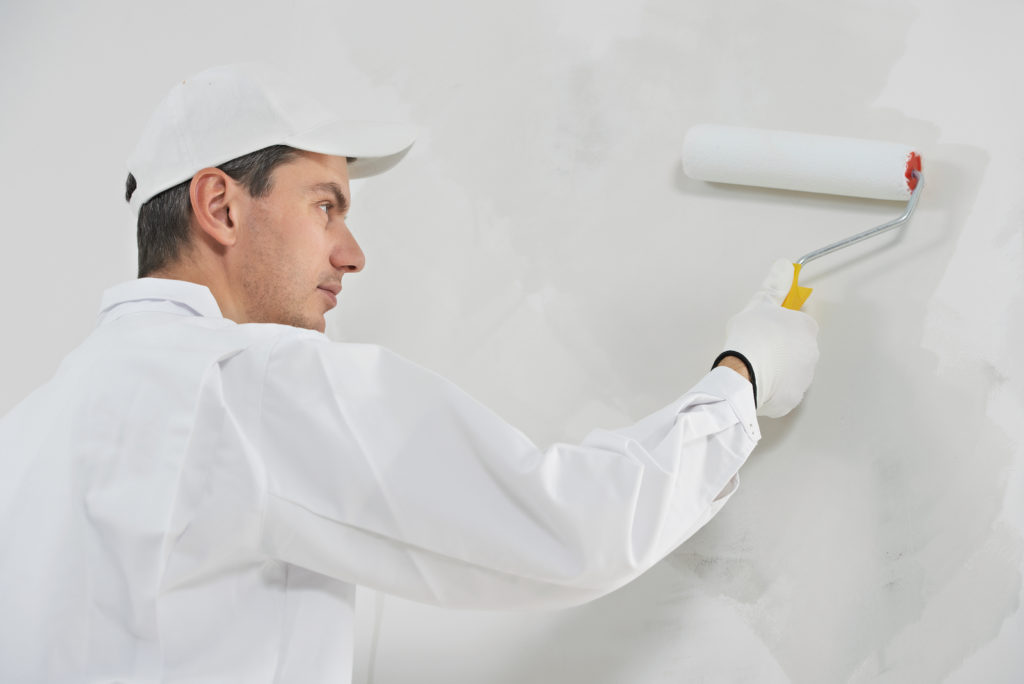
- The plastered and worn base is treated with a primer. After drying, you can start applying a decorative layer.
Structural mixture application
Structural and textured mixtures are applied in different ways, so decoration technologies will be described separately. Let's start with the method of laying the composition with mineral granules:
- Mineral mixtures are commonly used for exterior finishes. But at the same time, structural plasters can also be used in interior work - for example, when decorating public buildings, hallways, corridors, etc. High strength, which is provided by mineral filler, reduces the wear of the formed coating.
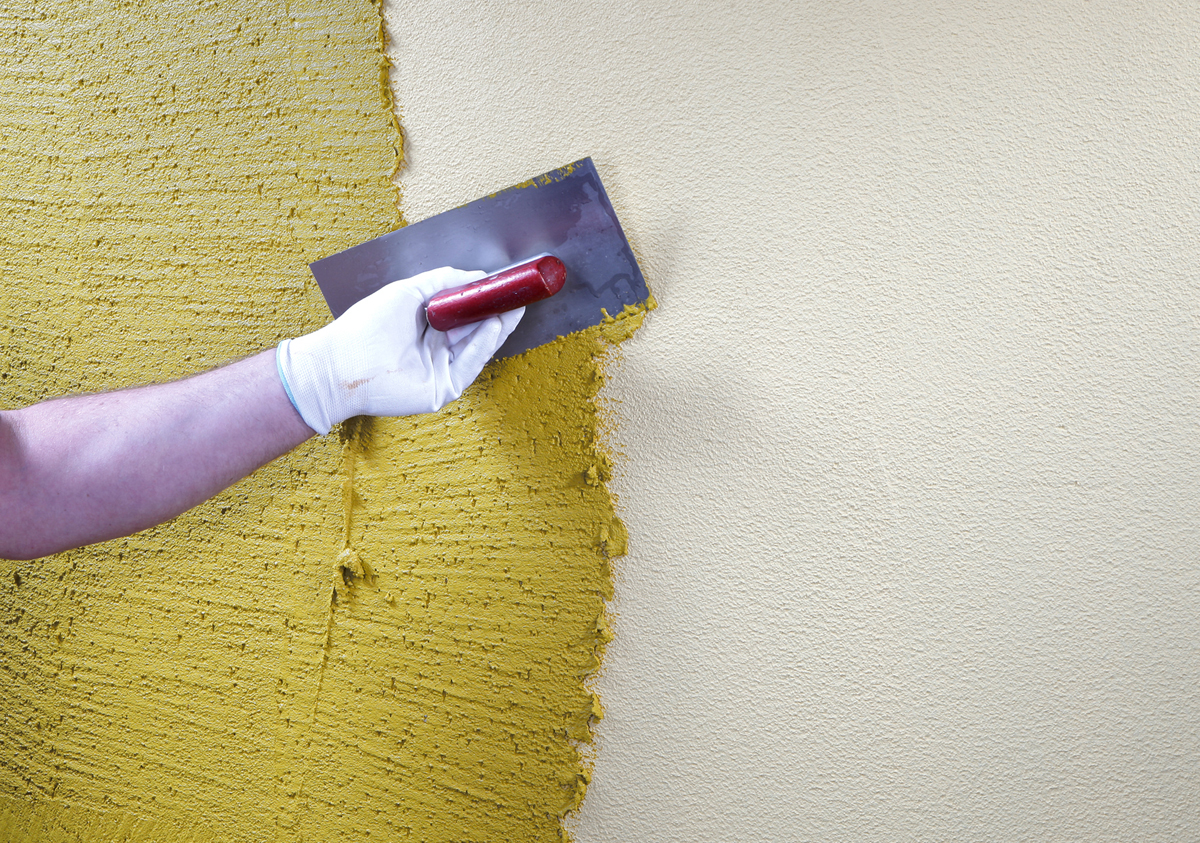
- At the first stage, we need to apply the plaster composition to the wall. To do this, we either use the finished mass, or knead the plaster mortar in a separate container, introducing a filler of marble chips or other minerals into it.
- Using a grater, which must be held at an angle, we apply the mass to the wall. We evenly distribute the composition. The layer thickness is selected approximately equal to the diameter of the filler grains.
![]()
- When the composition stops sticking to the tool, we proceed to the formation of the texture. To do this, we apply a plastic grater with a plane to the surface of the wall and start processing with straight, diagonal or circular movements. The mineral granules will move behind the grater, forming a pattern of furrows.
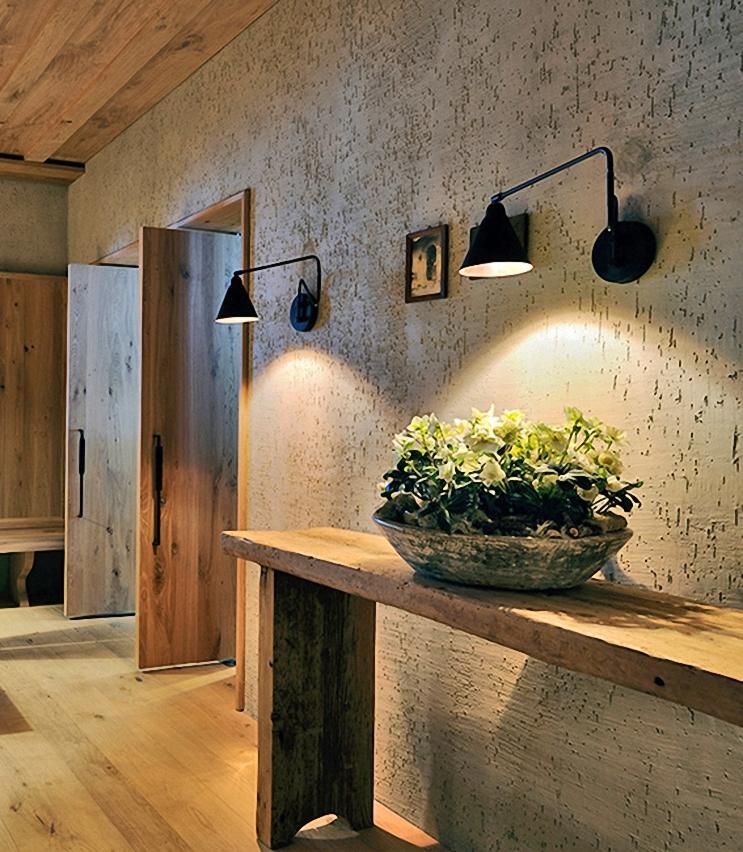
After finishing the treatment, dry the surface and paint it with interior paint.
Invoice formation
With textured compositions, everything is more complicated. Even the best plaster will not look attractive if you cannot apply it properly. The finishing technology directly depends on what result we want to get, so here I will give only a general algorithm:
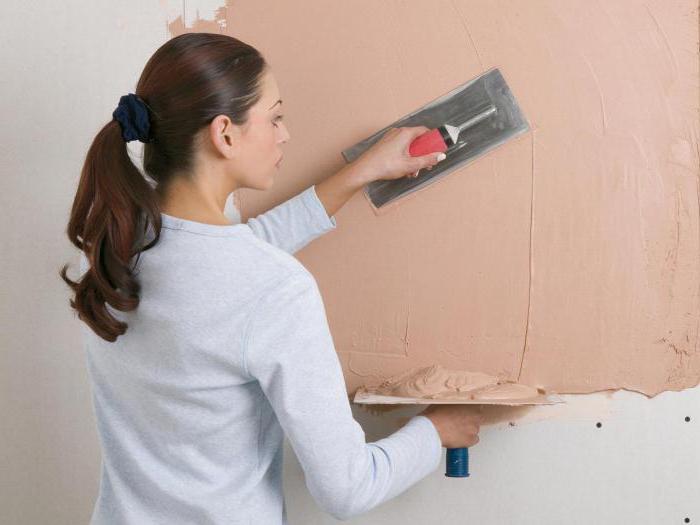
- First, apply the base layer, 1-2 mm thick. Since it will be visible under the rest of the layers, it is usually dyed in bulk in the desired shade. We dry the base layer until it stops sticking to the hands and slips under the fingers.
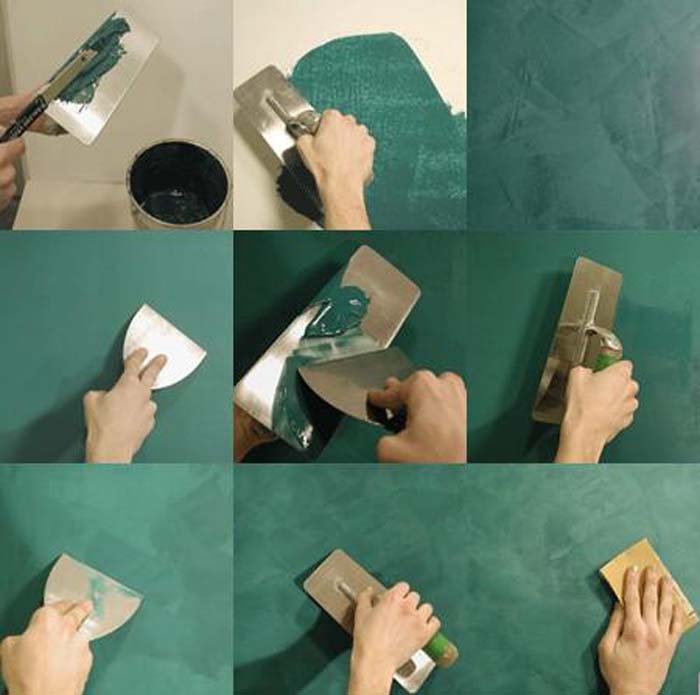
- Now we lay the decorative layer, applying it with strokes or evenly. With the help of smears with a thickness of no more than 0.5 mm, which are applied randomly, the surface of natural marble is imitated. According to this scheme, the famous Venetian plaster is applied.
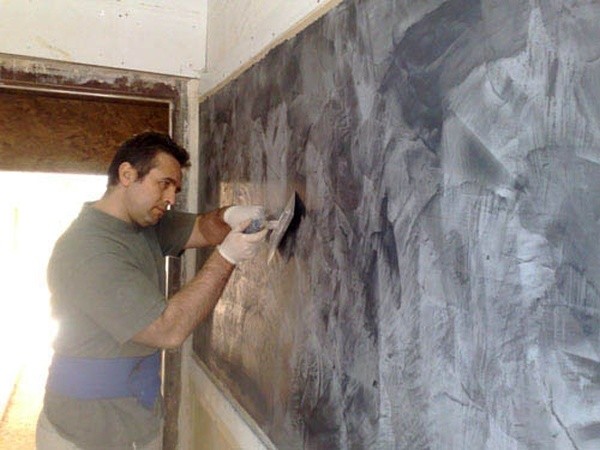
- If we need a textured surface, then immediately after applying the decorative layer, we begin its processing. For this purpose, you can use curly spatulas, brushes, sponges, patterned rollers, etc. Using these tools, we form a surface relief by applying furrows, dents, a pattern from a roller, etc.
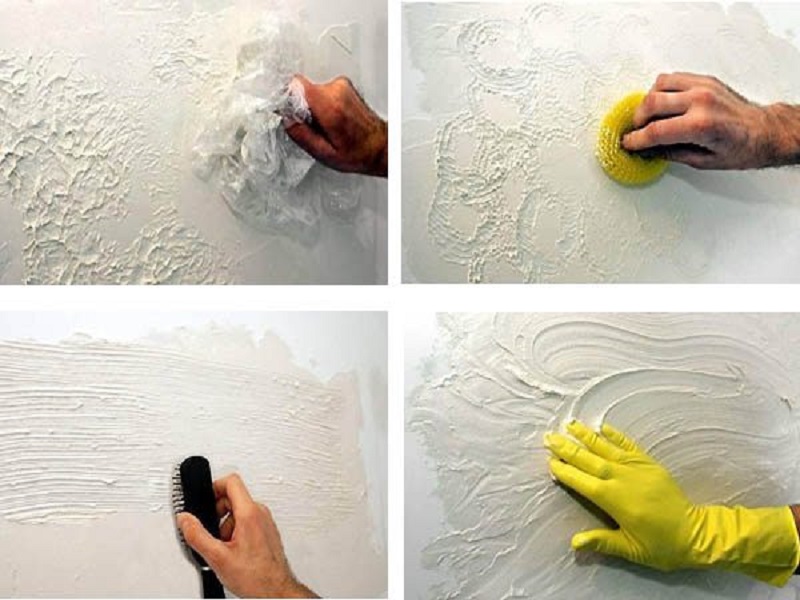
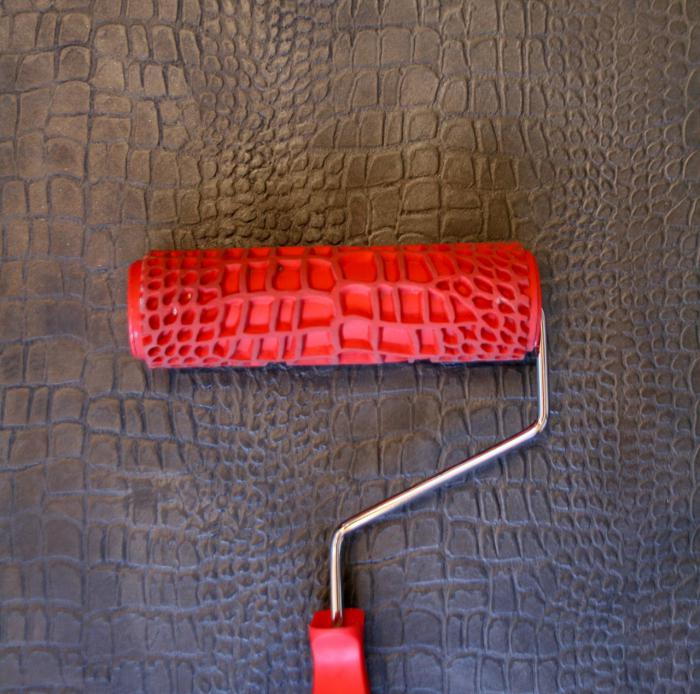
For a relief finish, you can knead a more “fatty” composition - less aggregate, more water and binder.
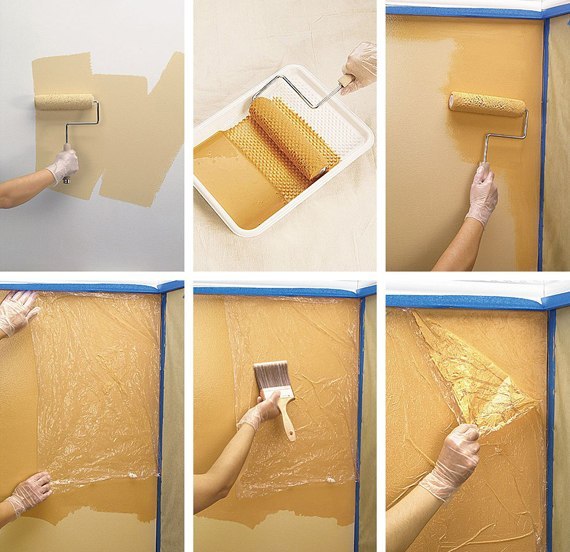
- It is also possible to decorate large surfaces with polyethylene. We apply a film with chaotic folds to a freshly applied liquid plaster and press it a little into the solution. You can remove the film after a few hours - a unique texture will remain under it.
As in the case of the structural composition, after completion of work, the surface must be dried.
decoration
If a ready-made mixture with pigment and decorative additives was used for plastering, then drying can be limited.
However, today there are many finishing techniques that allow you to decorate the surface and give it additional operational benefits:
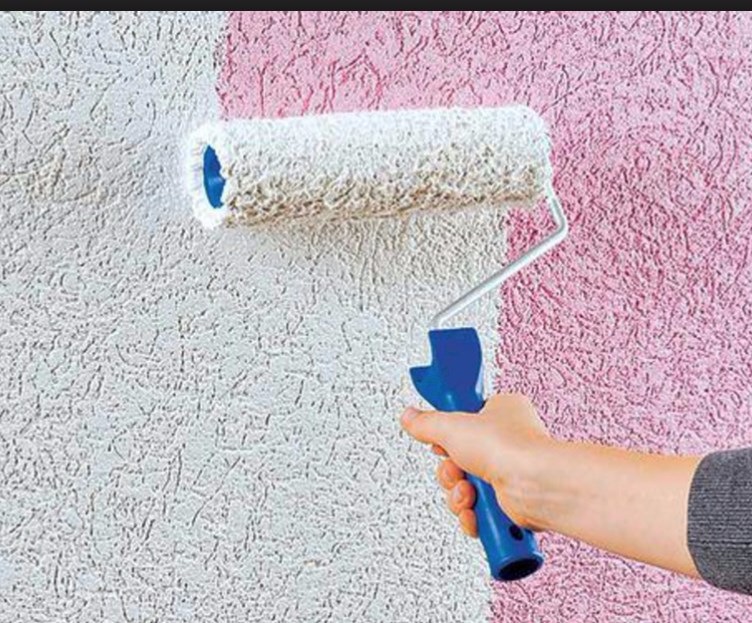
- Coloring- the most common way to decorate. It is used both as a main and as an additional technique. In the second case, a contrasting (darker or lighter pigment) is applied over the plaster dyed in mass. With the help of darker paint, depressions are usually emphasized, with the help of light paint, protruding parts are “highlighted”.
- Decorating with metallics or mother-of-pearl. Decorative material in the form of a powder, gel or paste is applied to the plastered wall with a sponge or brush. As a rule, the decor layer is made translucent so that it does not hide the relief and the main color of the plaster.
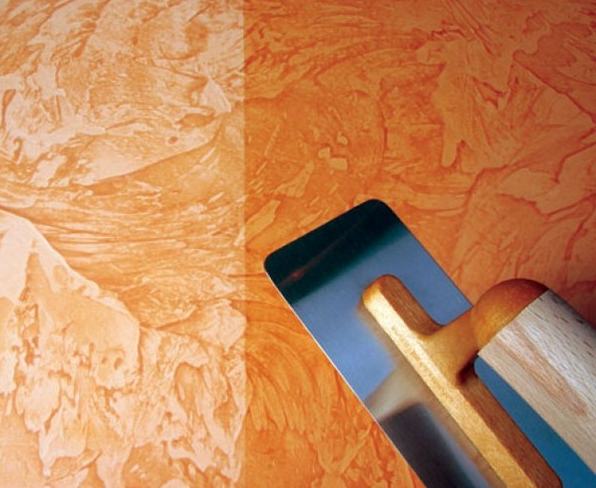
- Waxing- the traditional method of processing Venetian plasters, which can be used for other compositions. Provides effective protection of the wall from moisture. Hard wax is applied to the wall in a thin layer with a grater / spatula, after which it is polished with a sponge or felt.
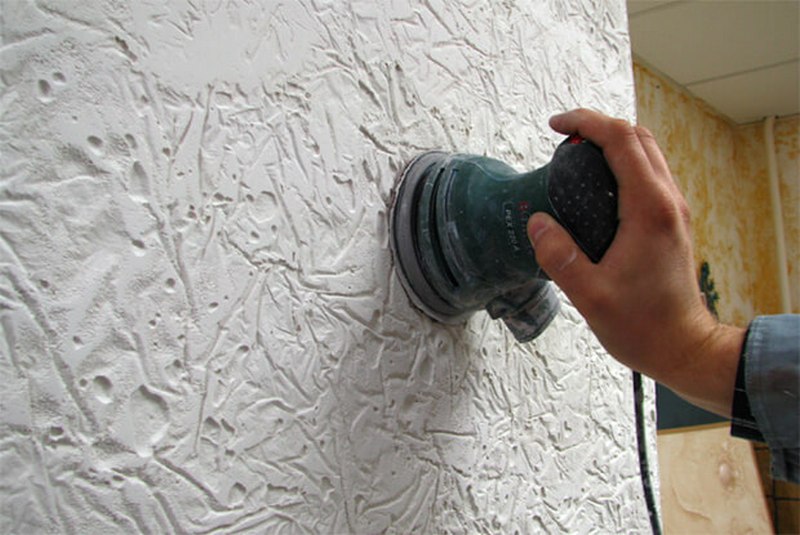
Only durable compositions can be waxed after they have completely dried. The thing is that when polishing the material is under serious stress, and can collapse.
- Varnishing- used for the same purpose as waxing. A water-based acrylic varnish (2-3 layers) is applied to the surface of the plastered wall. Lacquer not only gives the coating shine, but also protects it from external influences.
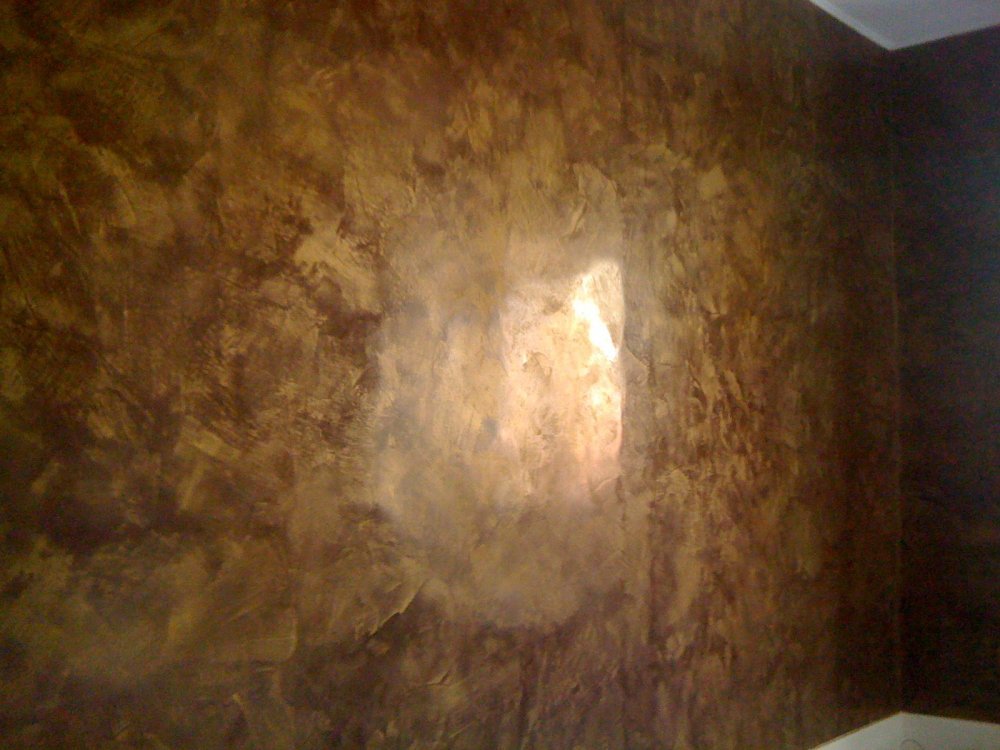
In addition to the functions described above, waxing and varnishing also make it easier to maintain the plastered surface. The smooth coating does not actively accumulate dust and dirt, and if necessary, it is easily cleaned during wet cleaning.
Conclusion
Decorative wall plastering requires from us not only knowledge of technology, but also a certain skill. And yet, before starting work, it is worth studying the above tips and watching the video in this article. You can get answers to your questions in the comments!
At the present time, the range of materials intended for wall decoration is huge and diverse. Every person wants to change their home, but, alas, not everyone can afford European-quality repairs, so it is postponed for better times. Or family funds have to be saved for several years in order to fulfill a dream and transform a house / apartment. Or you can decide everything differently and not expect manna from heaven, while spending a minimum of money and physical strength. Do-it-yourself decorative plaster is an excellent way out of this situation, because it can update the room and complement it with bright and rich colors.
The walls are in front of a person's eyes and are the first to attract attention. In ancient times, even primitive people decorated them with animal skins (a kind of trophy), painted them with paints and later draped them with fabrics. There is no exact historical data on the appearance of the first decorative coating for wall decoration. Most likely, wallpaper made of rice paper can be attributed to it: they were pasted over the walls in Chinese houses (200 BC), or the famous Venetian plaster, invented back in Ancient Rome.
Such plastering is done easily, and the final result surprises and amazes any layman. In the past, for drawing a picture, the then masters used special forms and ready-made stencils on cement that was beginning to harden. And especially dexterous craftsmen managed to manually apply patterns to the hardening mortar, for this they needed skill, a steady hand and a faithful eye. It was once, but today people have invented a technological plaster composition that is resistant to physical influences, weather temperatures, and besides, it gradually hardens.
Advantages of decorative plaster
The construction market offers consumers a huge variety: dozens of types of wallpaper, wooden and plastic panels, interior, facade paints, cork coating, tiles. The list is long, but each coating has its own advantages and some disadvantages. For example, if we consider the most common option - wallpaper and paint, then this is a wide range of patterns and colors, ease of application. But here's the bad luck, they can lag behind the walls, are not too resistant to physical impact and abrasion. Yes, and for their application, a perfect leveling of the surface is necessary.
An interesting way to form a relief pattern of plaster
Decorative wall covering is an important detail of interior design, giving it sophistication and individuality, its advantages are worthy of attention:
- amazing associative sensations from the material. For example, by applying the effect of noble antiquity, you can create an emphasis on warmth, peace and comfort, and an aged stone - stability, confidence and refined taste. Well, the brilliance of the precious metal is reliability, luxury and unique chic;
- environmental friendliness - the material is completely safe;
- uniqueness at the highest level - a variety of effects can satisfy the most scrupulous aesthetic preferences. You can be 100% sure that the applied decorative coating is unique in color and texture. Even the most qualified professional cannot make an absolutely identical result;
- durability and practicality - decorative plaster does not need any kind of abstruse care, and the paint retains its color for a long time. Plus, the coating is resistant to mechanical stress (though light);
- the textured appearance of decorative plaster is characterized by excellent acoustic properties, the reason is a pronounced sound-absorbing effect. In addition, it helps to create a room with comfortable conditions to listen to audio recordings. The sound sounds unobtrusive and natural, as if the performers have miraculously moved into the studio;
- long-term operation- decorative plaster lasts a long time until it gets bored. The issue of changing the color and texture is solved in the following ways: repainting the coating in a different tone; removal of plaster concrete base, puttying to a state of evenness and subsequent decoration at your discretion;
- poorly absorbs odors;
- durable and vapor-permeable coating;
- versatility of use - plaster can be applied to almost any, but always pre-prepared surfaces: brick, concrete, metal;
- unimaginable variations and solutions - bizarre geometric patterns, natural drawings, imitation of marble, malachite, granite, different types of wood, fabrics and even leather - the flight of fancy is not limited by anything, you can create and create individual harmony.
Composition of solutions, differences
Of course, each type of decorative plaster has its own specific composition, but the basic components are the same:
- binder - the basis for fixing the material on the surface;
- filler - an element that forms a decorative effect: sand, cellulose fiber, ground marble, flocks;
- solvent - water;
- auxiliary additives - enrichment of the product with additional properties: antifoam agents, thixotropic additives, biocides.
A similar composition of the recipe was formed in the 80s of the last century. The popularity of decorative plaster is constantly growing, according to leading experts, this is the most dynamically spreading material and the most promising.
Types of decorative plaster
Every person dreams of finding himself in a fairy-tale world after a hard day's work in order to relax his body and soul. We can confidently say that decorative plaster is the embodiment of art, original and exclusive.
Depending on the base, decorative plaster can be:
- acrylic - from the name it is clear that the basis of the coating is acrylic resins. Main characteristics: low vapor permeability, good resistance to the external environment;
- mineral - the basis of this coating is cement, plaster is characterized by excellent vapor permeability and resistance to fire;
- silicate - the basis of such plaster is liquid glass. Pros: still good vapor permeability, and disadvantages - limited color range;
- silicone - plaster is made on the basis of silicone resins. High cost is a hallmark, but it is fully justified by excellent quality. And resistance to various pollution peremptory.
Important: according to the scope and climatic resistance, decorative plasters are divided into internal, external and universal.
Possibilities of Venetian plaster
This type of plaster perfectly imitates polished or partially polished stone (granite, limestone, malachite), and may resemble crinkled fabric and embossed leather. Special techniques are used to apply this finely dispersed, highly ductile compound, resulting in a polished surface or a unique three-dimensional pattern.
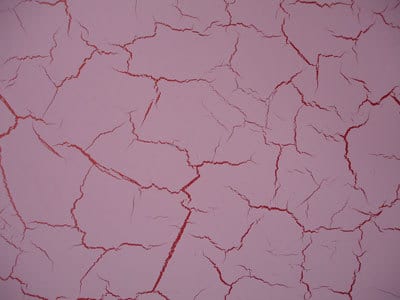
The possibilities of Venetian plaster are unlimited: it can perfectly imitate stone, leather, silk, with the help of this technology a three-dimensional effect is created.
The Venetian is characterized by excellent decorative parameters, it is easy to clean and has the properties of dirt repulsion. The latter indicator is especially relevant when treating a finished wall with wax or protective varnish, then the coating is supplemented with water-repellent properties and acquires a uniform sheen.
Effective smooth plaster
Decorative effects are amazing - silk drapery, ripples on the water, pearl shell, light sea foam.
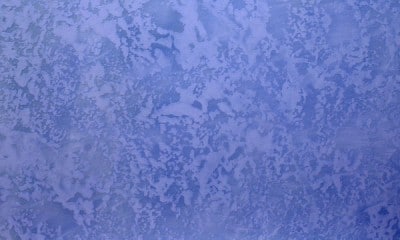
Smooth plaster is always unique, even the master himself is unlikely to be able to repeat her drawing.
Smooth coatings are very beautiful due to the play of colors and the fine texture of paints and varnishes.
This mixture can have different colors, it is based on synthetic materials with a variety of fillers (flax, cotton fibers).
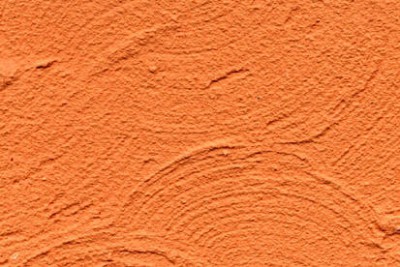
Textured plaster allows you to embody an unlimited number of amazing design ideas.
In the classic version, textured plaster is an imitation of masonry stone, bas-reliefs with a three-dimensional pattern, and tree bark. After being applied to the wall, the plaster acquires the texture of a certain filler, it looks original and hides surface defects.
A granular heterogeneous mass is also used with special granule additives, for example, fragments of quartz, wood fiber. The plaster does not need to be diluted, and is also characterized by extreme plasticity and pliability, it can be cleaned and washed.
Stylish stone chips
This type of decorative plaster consists of real small pebbles mixed with adhesive and binding components.
Important: this is a colder material, so it is recommended to use it in non-residential premises: corridor, bathroom, hall.
It comes in quartz, marble, granite, resists the weather superbly and looks amazing. Outside like this decorative material It is used to design individual architectural elements and the whole building.
Innovation - flock coating
This is a very interesting novelty, consisting of small particles. various sizes, colors and shapes.
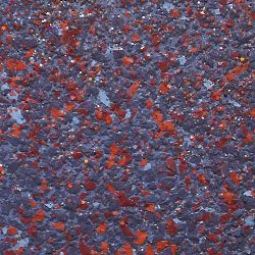
Flock coating - a new word in decoration
This coating is easy to clean with alcohol-based solutions, detergents, is not afraid of light, fungal infections, shocks. Plus, it's odorless and easy to apply.
Plastering technology
The whole process consists of several stages:
Carefully prepare the surface
Before applying decorative plaster, it is necessary to rid the walls of the old coating, thoroughly clean dust, dirt and then carry out a primer treatment.
Important: if irregularities are noticed on the wall, it is advisable to eliminate them.
Direct application process
Each type of plaster has its own application technique, which is described in detail in the attached instructions. The plaster is thoroughly mixed and applied to the walls with a roller or a special spatula.
![]()
Decorative plaster is an amazing result, for which tools and even the hands of a finisher are applicable.
As for consumption, it all depends on the desired effect and on proper use.
Important: after the end of this process, the plaster must dry (several days).
How and what to paint
Application of decorative plaster can be carried out in color or paint the surface after finishing work. At the same time, it should be remembered that when painting with a roller (with a short pile), the recesses are not stained, that is, the final effect will differ from painting with a brush or spray gun. The final result depends on the imagination and personal preference.
Watch a video demonstrating the technology for creating a silk surface when stained:
The final touch is a surface wax treatment to protect against dirt and achieve a sheen - glossy if beeswax is used, and matte if synthetic.
There are many options for decorative plaster, with its help you can realize the most incredible ideas and fantasies. And the work done by one's own hands is doubly valuable, because a piece of the soul is invested there.
There are many different types of wall finishes, such as wallpaper, and panels, and paint, but we will take a closer look at decorative plaster. Many consider this type of wall decoration to be unusual and beautiful, but they are convinced that it is expensive and time-consuming. This is absolutely not true. Let us consider in more detail what types of decorative plaster for walls the video will show how to apply it.
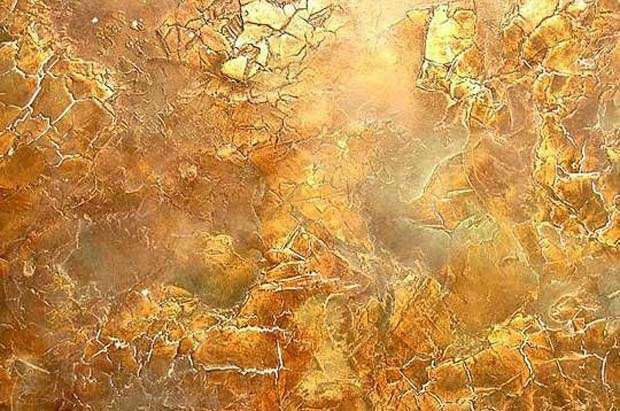
Many people think that plaster is a mixture of sand and cement (see), used to level walls and seal cracks. Coloring materials are added to modern plaster, and decorative plaster is obtained on the walls.
This wall covering is becoming very popular, let's take a closer look at all the differences and varieties of this material, as well as all the pros and cons of each of them. And of course, consider how to cover the walls with decorative plaster.
Types of the main composition of the plaster

Types of decorative plaster according to their composition are divided into:
- Mineral(see) - is sold in the form of cement powder and is diluted with water before application and mixes well. It is used for mineral bases with a quartz primer. Such plaster is quite durable, passes air well, has a long service life and it has a rather low price.
The disadvantages include the fact that it will have to be painted additionally by yourself. But there are more expensive types of such plaster, they are separated by their textural qualities and addition to the composition of various impurities. For example, marble chips or sparkles.
- Acrylic- it contains acrylic resin, which gives plasticity and water repellency. Such plaster is easy to install, but can burn, so it is not used near mineral wool heaters.
This type of plaster is sold ready for application, but it is necessary to check its expiration date, since it will be very difficult to work with material that has expired or is approaching a delay. Therefore, you should not take it, even if it comes at a discount.
- Silicone(see) - is considered the most popular and universal. It is elastic, long-lasting, breathable and suitable for any surface. This type of plaster is sold ready for application and has a wide range of colors.
With the help of silicone plaster, you can create your own individual masterpieces, but of course the cost of such beauty is quite high. You will also need a special silicone primer to apply this material, but after seeing the result, you will not regret it.
- silicate- it is based on potash glass and such plaster is very rarely used for finishing interior walls. More often it is used for finishing the facades of the building, since when used it emits harmful substances.
This type of plaster is difficult to apply, as it hardens rather quickly and skills and dexterity are needed to have time to apply the plaster, distribute it and create the desired pattern. That is why silicate plaster is not in great demand.
How to choose decorative plaster
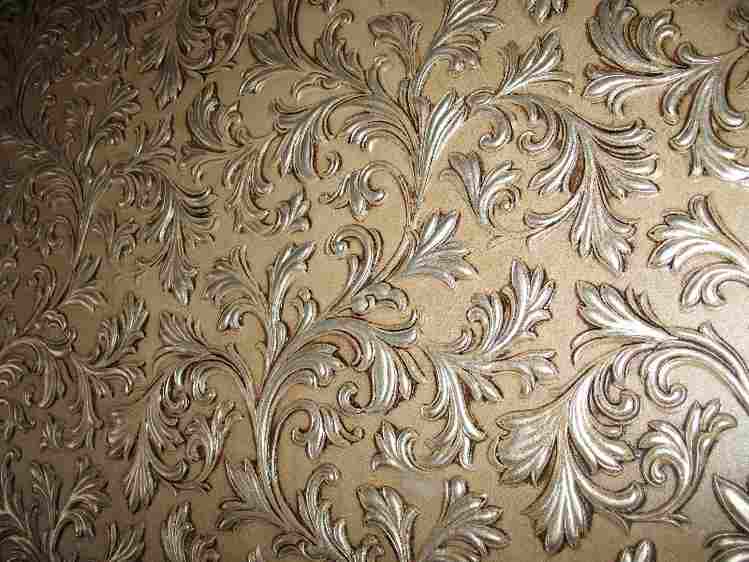
With a large assortment of varieties of decorative plaster, many are lost in the choice. You can choose the right plaster, taking into account the operating conditions and the method of application. Of course, the price also matters, because newer and more fashionable materials are quite expensive.
When choosing a wall covering with decorative plaster, first of all, consider your desire and what you want to get in the end. Next, we will consider in more detail the types of plaster for its filling, their pros and cons, and what effect we can get with their help.
Textured decorative plaster
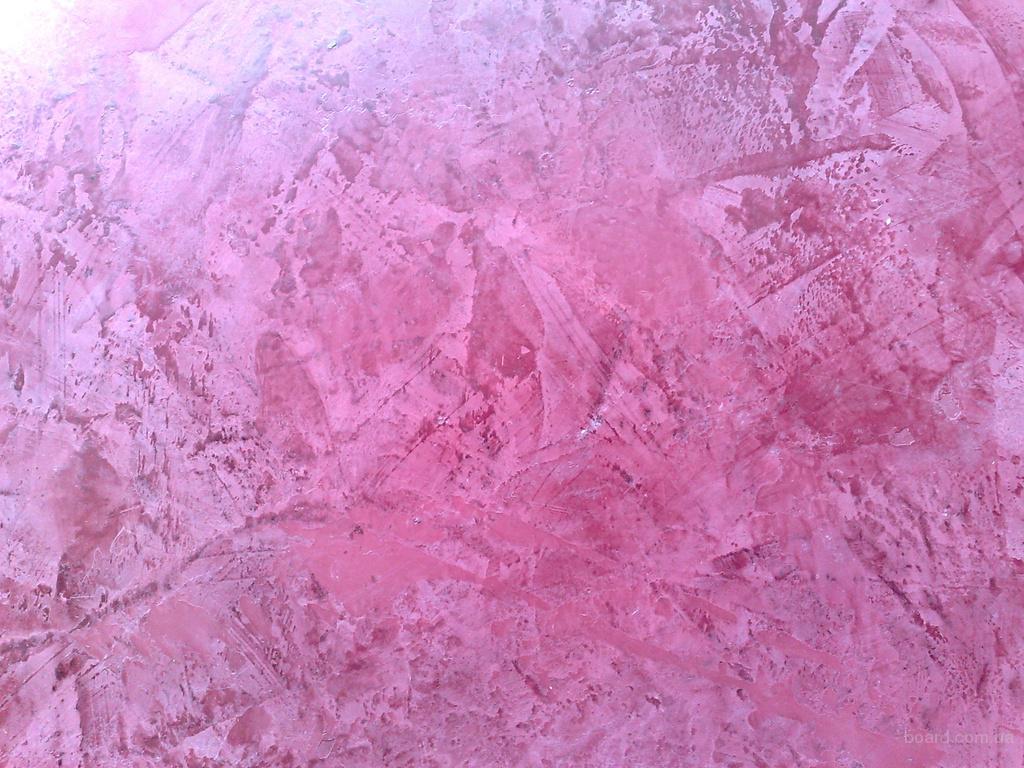
Textured decorative plaster is considered the most unusual type of finish.
It is added to its composition various materials to create a textured pattern, for example:
- Small pebbles.
- Cotton fibre.
- Wood sawdust.
- Crushed brick.
- Sand.
- Mica.
Due to this filling, not only a variety of relief patterns are obtained, but also different colors and shades.
With this type of plaster, you can create various visual effects, for example, such as:
- Sandy wind.
- Watercolor painting.
- Imitation stone.
- Wood bark.
- Velvet.
use textured plaster indoors and outdoors. It is quite simply applied to any surface, can hide the bumps and flaws of the walls, and lasts a long time.
Its main advantages are:
- Ease of application.
- Ease of maintenance.
- Don't be afraid of damage.
- Good moisture tolerance.
- Doesn't lose color.
- Thermal insulation.
- Good soundproofing.
- Eco-friendly.
- Slightly combustible.
Textured decorative plaster is easy to apply to the walls, the difficulty lies in creating a pattern, this can help:
- Textured roller (see).
- Putty knife.
- Stencil.
Advice! Before applying the plaster, it is necessary to clean the walls, dry them and prime them. And only after the primer has dried, apply textured plaster.
Structural decorative plaster
![]()
Structural decorative plaster is sold ready for application, in the form of a granular mass. It can be created on various bases with the addition of water or a solvent. Due to its additional filling, such plaster can be both fine-grained and coarse-grained.
Fill structural plaster with materials such as:
- Small pebbles.
- Multicolored granules.
- Pieces of quartz.
- Wood fibers.
This type of plaster is suitable for any room and surface, but it is worth remembering that structural plaster with a solvent is not suitable for a bedroom or a children's room. Most often it is used in the bathroom or hallway.
The main advantages of structural decorative plaster are:
- Ease of use.
- Versatility of application.
- Damage resistance.
- Waterproof.
- Ease of cleaning.
- It tolerates temperature changes well.
- Breathability.
- Variety of decorative patterns.
- Affordable price.
Below is a step-by-step look at how to apply decorative plaster on a wall:
- Preparing the walls. We clean them from the old coating and dry them.
- If there are no large dents or drops, the wall can not be leveled.
- We apply primer. This will harden and protect the surface.
- We apply plaster on the dried primer.
Creating a pattern depends only on your imagination and desire. Do-it-yourself decorative wall plastering video will show how you can do it yourself at home.
Venetian decorative plaster
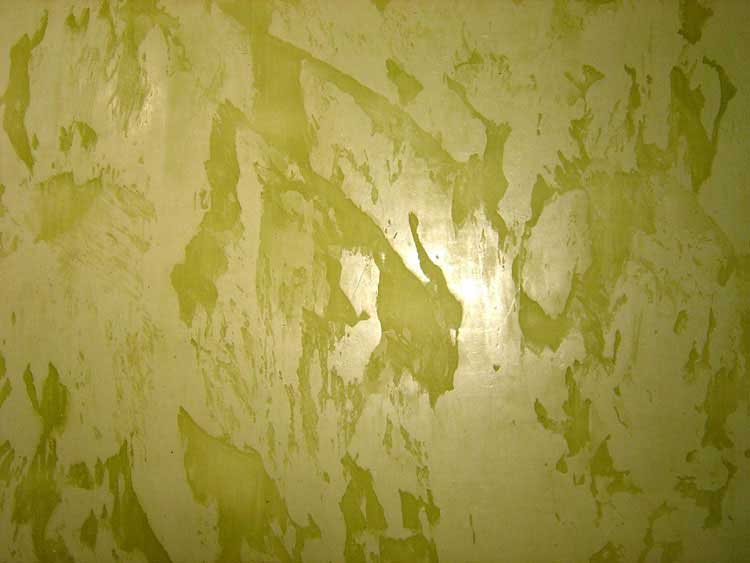
It has been used since the Renaissance. She trimmed the walls of palaces with chic furnishings. Since it contains marble chips, the appearance of this plaster applied to the wall looks like a marble wall.
Venetian plaster is sold in the form of a transparent mass and with the help of tinting and mixing two or more colors, an unusually beautiful surface is obtained. The depth and transparency of the plaster is achieved by a special application method, in several layers, covering the top with wax or varnish for protection.
The advantages of Venetian decorative plaster are:
- Create a mosaic effect.
- Fast drying.
- Waterproof.
- Wear resistance.
- Durability.
- Environmental friendliness.
- Fire resistance.
How to cover the walls with decorative plaster, consider in more detail:
- On smooth and cleaned walls, apply a primer or acrylic paint, in several layers.
- We divide the surface of the wall into several sections, about one meter.
- After the walls are completely dry, we apply plaster to the first section.
- The first layer is applied all over, the next with strokes.
- The plaster is applied in small strokes, you can take several colors.
- Level and smooth over the entire area of the site.
- Also with other areas.
- We polish the entire surface of the wall, after complete drying.
- We apply wax or varnish for protection.
Important! Apply Venetian decorative plaster on even walls, otherwise you will not get the desired effect.
Using several colors, we apply different shades each with its own layer. One color and several of its shades look more impressive.
When working with Venetian plaster, there are several factors to consider:
- When applying a smear, at the beginning and at the end, loosen the pressure on the ironer - this will create a layer of different thickness.
- Layers should be applied gradually, from one area to another, polishing, capturing the edge of the adjacent one.
Advice! Since the application of Venetian plaster requires skill, it is worth practicing on small surfaces.
After finishing work, you need to be patient, as the wall will dry completely only after a week.
Bark beetle - decorative plaster
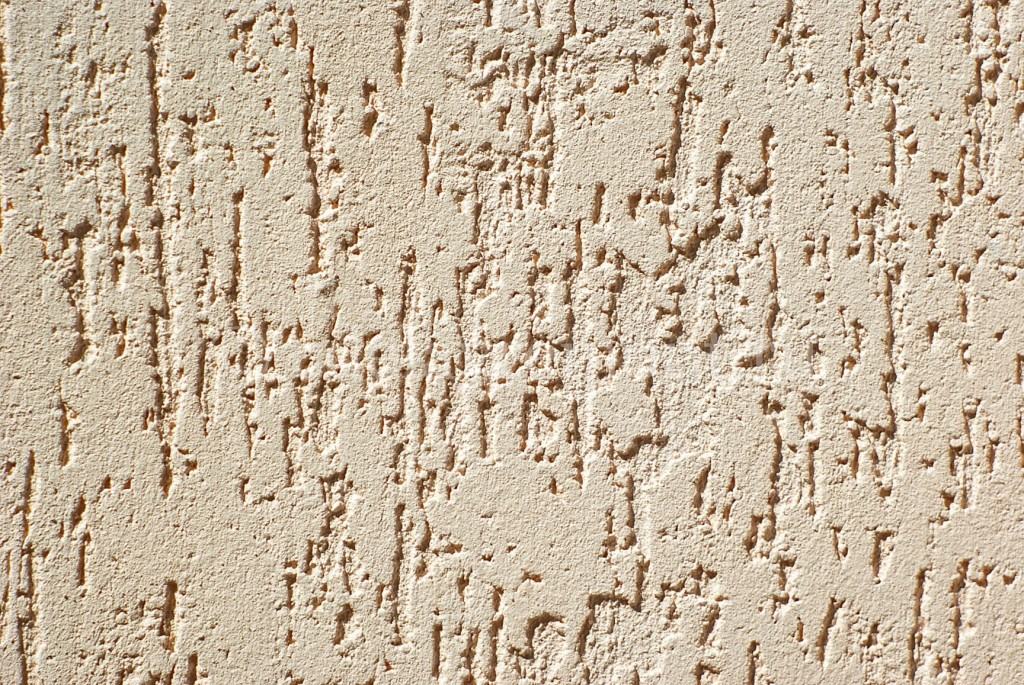
Decorative plaster bark beetle, even in its name resembles the bark of a tree. This is a very original wall covering in its appearance and is used for both indoor and outdoor use.
The composition of this type of plaster is filled with marble chips of different sizes, which, when applied, leaves various grooves on the surface. Their depth and width is directly related to the size of the marble chips. Such wall decoration creates comfort in the interior and does not bother, as glossy surfaces, over time, can begin to annoy. Bark beetle plaster is well suited for eco-styles and rustic interiors.
Such plaster is sold both in the form of a powder and in the form of a pasty mass. Of course, the finished mass is more convenient, but it also costs several times more than dry plaster. Most often mixtures white color, although occasionally, other colors can be found.
We ourselves can make the desired color or shade by adding paint to the plaster or pre-painting the walls. Also, the method of application can be varied, from this and a different pattern. For example, you can apply plaster horizontally and vertically, crosswise and randomly, in waves and circles.
The advantages of decorative bark beetle plaster are:
- Wear resistance.
- Environmental friendliness.
- Durability.
- Ease of cleaning.
- Fire resistance.
- Ease of application.
- Hides imperfections.
If you purchased a dry mix of plaster, then the instructions for diluting it are indicated on the package.
Consider the correct detailed way to prepare it:
- The dry mixture is poured into the water, and not vice versa.
- We take warm water, about twenty degrees.
- We mix everything with a drill with a nozzle, at low speeds.
- Let the solution stand for five minutes and beat well again.
- The proportions of the mixture and water are taken into account from the brand of material and are indicated on the packaging.
Important! Be sure to read the instructions, as a mixture of one brand of manufacturer can stand for several hours, and another only a few minutes.
Decorative wall plaster how to apply consider in more detail:
- We apply a little plaster on the wall and smear it with a thin, even layer.
- About half an hour later, after it thickens, we easily draw a grater over the entire surface.
- The movements depend on obtaining the desired pattern.
- Do not put pressure on the grater, as it depends on how clear the pattern will be.
Advice! If you apply this type of plaster on large surface you should call an assistant. One applies the solution, the second rubs the surface.
Graphito - decorative plaster
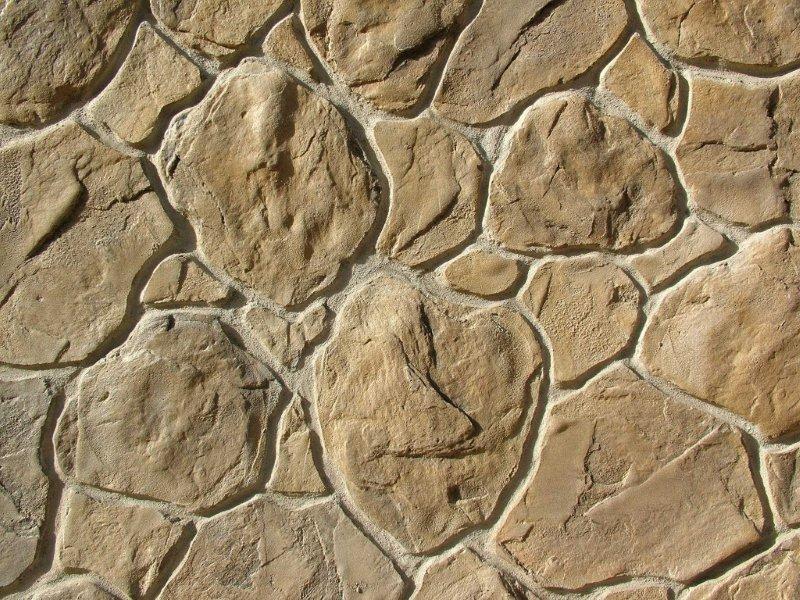
Graphite decorative plaster is a very unusual material, as it can be used to create an imitation of masonry. And it will cost you much less than even artificial stone. At the same time, it is suitable for finishing any surface, both inside and outside the building.
This type of plaster is used not only for walls, floors or ceilings, it can be used to decorate a fireplace, fence or paths in the yard. With its help, you can also create a variety of color drawings, it all depends on the design idea or your imagination.
The advantages of decorative graphite plaster are:
- The uniqueness of the appearance.
- Ease of application.
- Versatility of application.
- Good wear resistance.
- Environmental friendliness.
- High moisture resistance.
- Acceptable price.
- Long service life.
Applying graphito plaster is easy with an automated gun. It does not require special skills, and you can easily create masonry with your own hands, no worse than the real one. After complete drying of the solution, if desired, it can be painted in the desired color.
Output
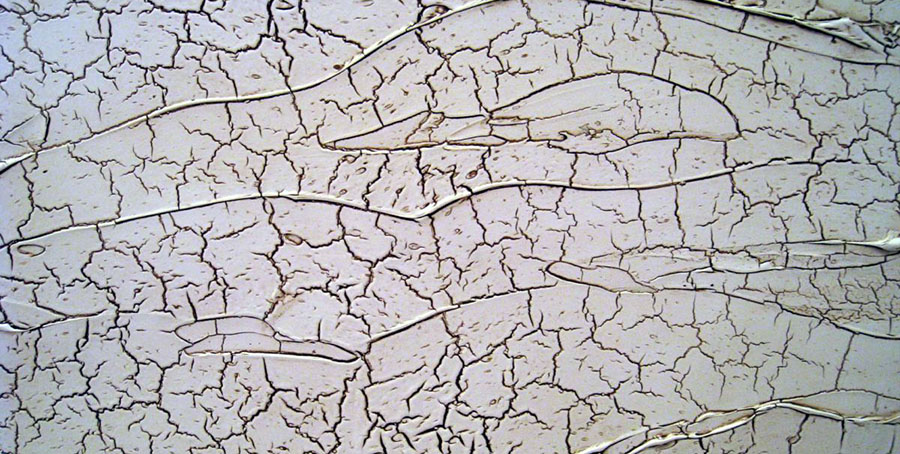
Of course, we have not considered all types of decorative plaster, there are quite a few of them: semi-antique - imitation of a cracked surface; flock coating resembling flakes; application under a fur coat, using a spray of a broom; sgraffito - plaster with a pattern or pattern; terrazitic - imitating rocks. Only you can choose.
In the video in this article, you can see the application of decorative plaster on the wall.
Plaster, as a method of wall decoration, has been used for a long time, since the Renaissance. In those days, the style of their decoration, called frescoes, was born.
This wall painting, which has come down to our times, cannot leave anyone indifferent. Modern decorative plaster for interior decoration, in hands good master, capable of creating masterpieces that are not inferior to frescoes.
Our article will discuss what types of decorative plasters exist today, and what aesthetic effects can be obtained from their use.
According to the binding element, decorative plasters are divided into water and polymer. What is water - everyone understands.
So:
- Polymer plasters can be based on polyurethane. They can be used for both outdoor and indoor decoration.
Another type of polymer composition, epoxy, is used only indoors. - Plaster compositions are also classified according to other criteria: according to the material used as a filler, as well as the method of applying and forming a pattern.
- Due to the fact that polymer mixtures can release toxic substances, finishing apartments with decorative plaster based on polyurethane and epoxy resins is undesirable. For this, it is better to use water-based options.
Water plasters can be acrylic, styrene-butadiene, PVA-based. - According to the type of the resulting surface, the plasters also differ. The most popular are pebble.
Granite, marble or quartz chips are used as a filler for them.

- As a bonding base, cement is more often used here, because pebble plaster is used, mainly for. The filler, as a rule, is sold separately from the mixture itself, and is added to only the last batch of mortar for applying the finishing layer.
But it's on sale ready-made options plaster based. - The most environmentally friendly can be considered mineral plaster, which includes: white cement, lime, granular marble and various minerals. This material has good thermal insulation properties.
- It is used more often for outdoor decoration, but sometimes it fits well into the interior of the premises. The well-known "bark beetle" can be attributed to the mineral types of decorative plaster.
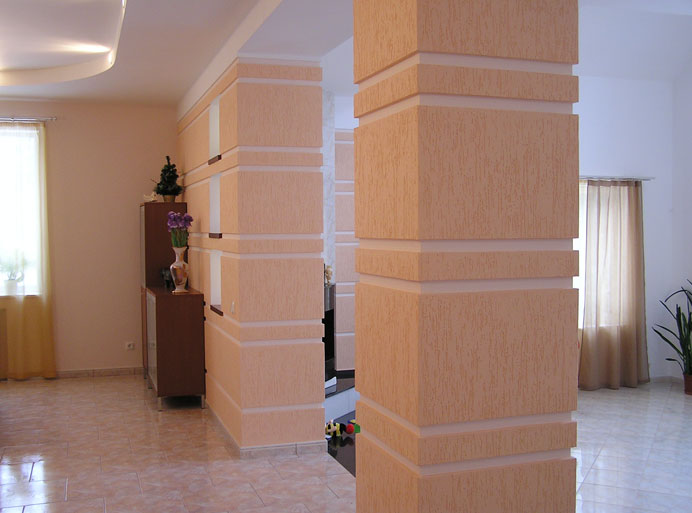
- Spectacular paintings and stunningly beautiful drawings on the wall are created using the so-called structural plasters. Their solutions are incredibly plastic, so working with them is a pleasure.
The image can be sculpted as if from plasticine. - Structural plasters are available only in white - pigments are sold separately, so that the solution can be tinted as you wish. The finished coating can be washed using detergents, it will retain its color and pattern for a long time.
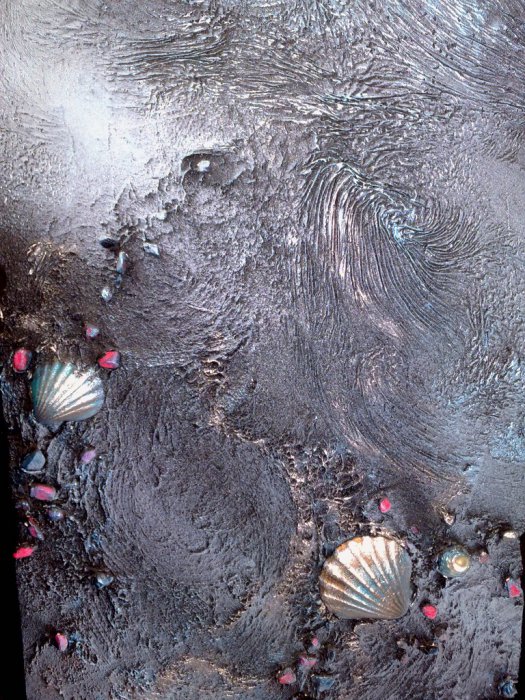
- Venetian plaster is decorative for interior decoration, the most difficult to perform. Accordingly, its price is the highest.
In common parlance, it is called liquid marble. And this is true. Since the filler for such plaster is marble flour and gypsum of the finest grinding. - The surface of Venetian stucco recreates the natural beauty and rich palette of marble shades, which makes any room acquire a rich interior, similar to an ancient palace. It is almost impossible to do such work with your own hands.
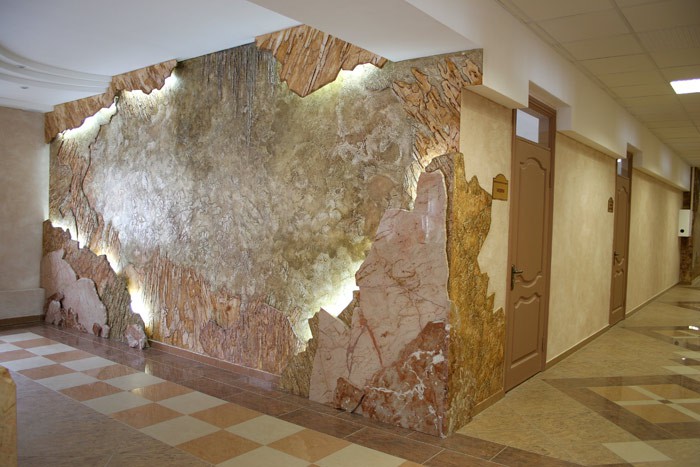
- You need to know the technology of applying plaster, and it is very complex, at least six or seven layers. You also need to have professional skills and creative imagination, which allows you to create unique drawings.
These are masterpieces, in the truest sense of the word, since even the master himself cannot repeat the same pattern twice. This is Venetian plaster. - There are some other types of modern plaster mixtures that do not fit into any of these categories. For example: microcement plaster. By and large, it is an analogue of Venetian plaster, but cheaper.
- The pattern created with microcement plaster looks similar to the Venetian version, but this mixture does not contain gypsum and marble, but cement and polymers. Due to this, microcement plaster can also be used for, as well as in rooms with high humidity.
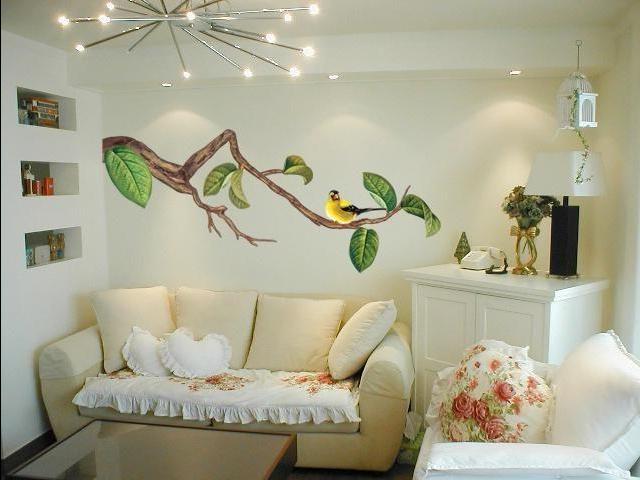
most accessible to self-finishing kind, is a soft decorative plaster, popularly called "liquid wallpaper". They are based on loose cellulose, or silk threads, CMC glue and pigment.
With good imagination and adherence to a certain technology, on the walls and with the help of liquid wallpaper, you can create beautiful compositions, as in the photo above.
Relief creation
The technology of finishing with decorative plaster, like any other, begins with surface preparation. The old coating is removed, and the walls are cleaned to brick or concrete - depending on which house.
Wet cleaning is carried out in the room, dust is removed from the walls with a vacuum cleaner.
Further:
- Masking tape should be sealed all the places where the plaster should not get. The surface of the floor is covered with thick paper, or cellophane film.
The wall is treated with a primer. This is a prerequisite for ensuring good adhesion of the mortar to the wall. - Then you need to think over and choose the color you need to create your interior. Plaster mixtures are sold both in finished form and in dry form.
If it is required, for example, to finish only a niche, of course it is more convenient to take a solution ready for use.
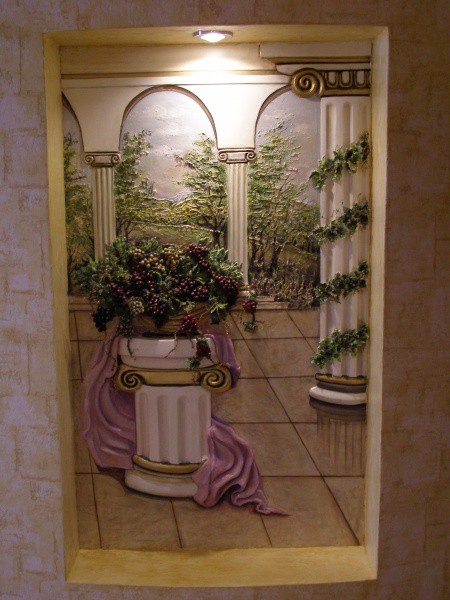
- And when finishing large areas, it will be much cheaper to work with dry mixes. They are diluted with water, in the ratio required by the instructions, and carefully knocked down with a construction mixer, to the consistency of thick sour cream.
- When working with decorative plaster, it should be remembered that a light shade is the basis for a darker color. Therefore, the first layer should be light.
The solution is applied to the wall as evenly as possible, using a rubber spatula. Although, careful smoothing, in this case, is not required.

- To create a relief, craftsmen use a variety of tools: rubber and rag rollers, figured spatulas. Any improvised means also help: rags, sponges, cellophane.
- You can even take a Christmas tree toy or a children's mask and make a trial relief. If you don't like something, you can always smooth over the drawing and make a new one.
Rubber stamps, specifically designed to create relief on the plaster, can give it the appearance of a wall pasted over with textured wallpaper.
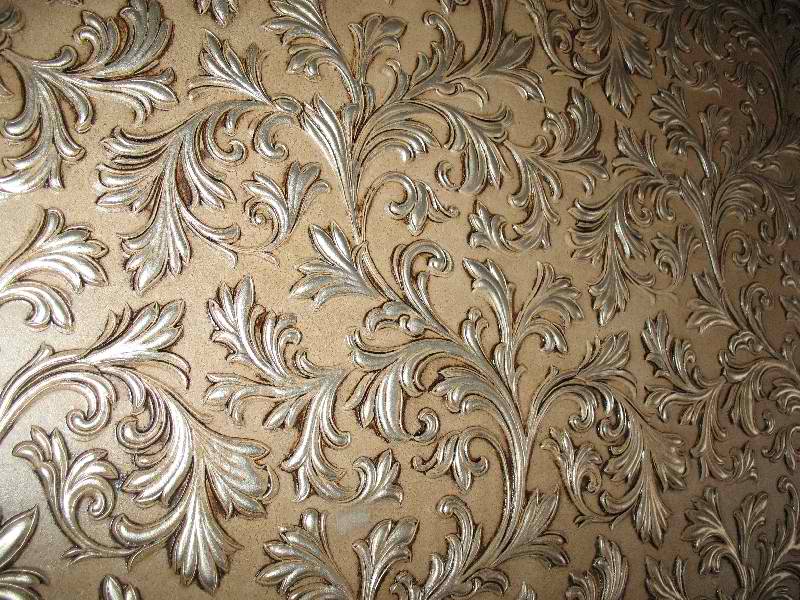
- If you want to get a clear pattern, after applying the relief, the wall must dry completely. Then a second, darker layer of plaster is applied.
It is applied in small portions and carefully smeared. - The thinner the layer, the more transparent it is, and the better the relief will be visible. And due to the fact that the second layer of plaster is darker than the first, the relief looks more voluminous.
- It is worth noting that in order to achieve the original, masters often perform more than one relief, but several. In this case, various shades of plaster can be combined, as in the picture below.

- Depending on the nature of the pattern, you can apply a second layer without waiting for the first layer to dry. Who is seriously thinking about how to do this work on their own, look at the video, how experts do it.
- Unwanted sagging or the resulting corners, they cut with a knife, grind with sandpaper. There are many nuances in this work, and each master has his own professional secrets.
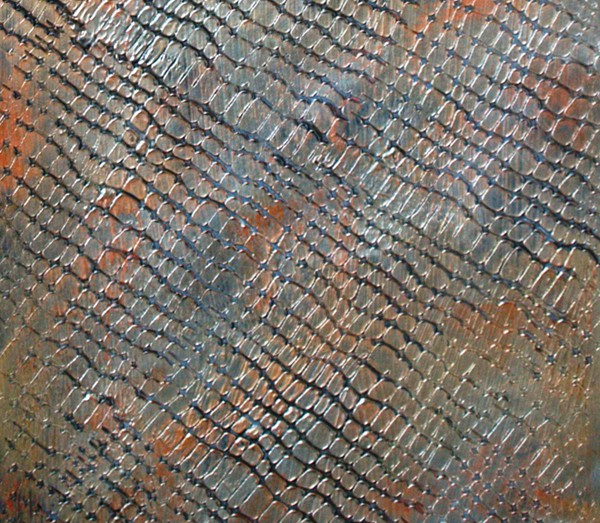
- There are many varieties of structural plasters offered by manufacturers to create a specific relief, for example: cracked old plaster, tree bark or, as in our example, crocodile skin.
In order for the finished relief to acquire durability and not be contaminated during operation, the wall must be covered with polyurethane sealant. This is done half an hour after drawing the picture.
Drawings and panels on plaster
The original panel on the wall can decorate any, even the most modest interior. That is why many people ask themselves: “How to make a panel, and where is it better to place it?”.
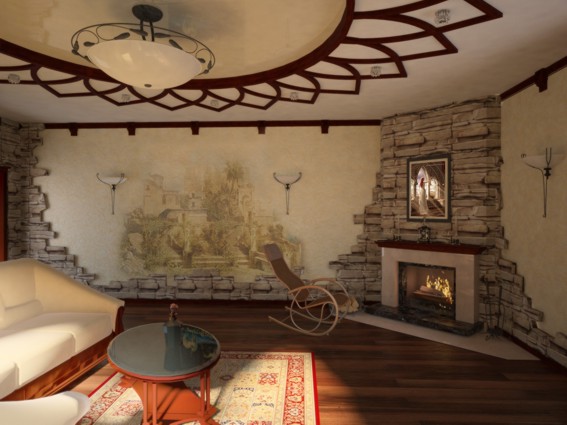
So:
- It is best if the panel is located on a protruding part of the wall or in a niche (see). Especially if good lighting is used.
An excellent choice would be a free wall framed with decorative stone or polyurethane molding. - The drawing on the wall will look great in the walls: next to the window, interior door or arch. It is permissible to cover all the walls of the room with a pattern only in one case - if it is a children's room.
Naturally, the theme of landscapes and drawings, in this case, is more often associated with cartoon characters and fairy-tale characters.
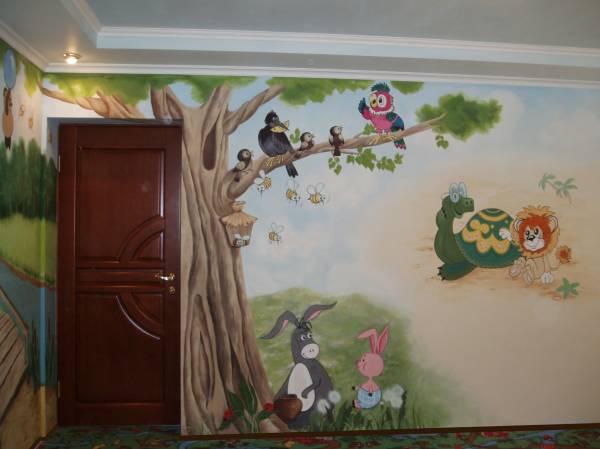
- A decorative panel, like no other finishing material, catches the eye, causes delight, a desire to touch and make sure that it is regular wall. The choice of pattern when creating a panel is not limited by anything - you only need good taste.
And, of course, the drawing should not cause disharmony in the overall concept of the interior. - In order to understand how the wall panel is made, and the interior decoration with decorative plaster - videos and photos found on the Internet will indispensable assistants. And we, for our part, will also try to help you understand this issue.
- There are three types of techniques for creating a visual effect on plaster. The simplest, and most accessible for self-creation, is a three-dimensional stencil panel.
As a stencil, a piece of drywall, hardboard, or plywood can be used, with a pattern or pattern cut out on it. - On a leveled and dried wall surface, with masking tape, around the perimeter, fix the stencil. On vertical surfaces, there is a possibility of stencil shifting.
This can spoil the nuances and subtleties of the picture. Therefore, instead of masking tape, you can use aerosol glue to fix the stencil. - A plaster solution is applied to the cut out elements of the stencil. The larger its layer, the more voluminous the drawing will be. After that, the stencil is carefully removed.
Your creation should now be completely dry. The time required for this depends on the thickness of the applied layer of plaster, but no more than a day.

- After drying, the convex parts of the panel are shaded with tinted paint, rolling over them with a roller. Then, when the paint dries, you can give them a darker shade, make it metallic or pearly.
Such panels are often performed on the ceiling, in combination with plaster moldings. - Another very popular type of decorative wall decoration is painting on structural plaster and relief graphics. For this, plastic fine-grained plasters, acrylic paints and colorless varnish are used.
Sharpened wooden sticks, different-sized brushes, sponges, cardboard templates and narrow spatulas are used as tools.
![]()
- Many people know how to draw well on paper, it costs them nothing to make the same drawing on wet plaster with a sharp object. For those who do not know how to draw, there are paper templates.
To create a texture on the panel, special rollers are used. Paint the panel after it is completely dry. - The third type of decorative finishing on plaster is stucco panels, and various combined options. They are three-dimensional figures, or whole paintings, made in the entire wall.
- Such panels can imitate brick or stonework, depict figures of people and animals, flowers and various objects. This is the most complex type of decoration, and without the participation of a specialist it is hardly possible to perform it.
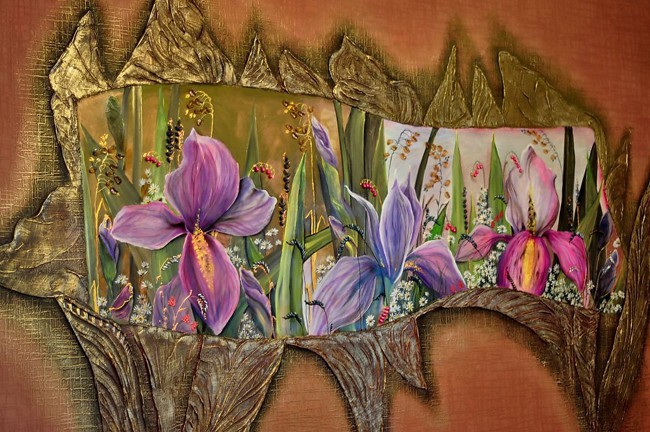
Such work, especially if it is done by an artist, is not cheap, but the aesthetic impression it makes is worth the money, believe me. Decorative finishes made in this style will delight all the inhabitants of the house for many years, and will never go unnoticed by the guests who have visited it.



